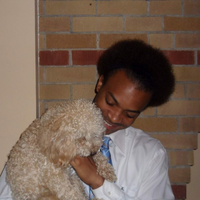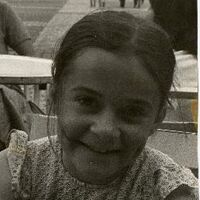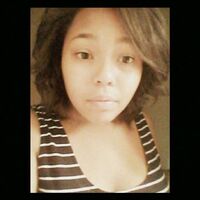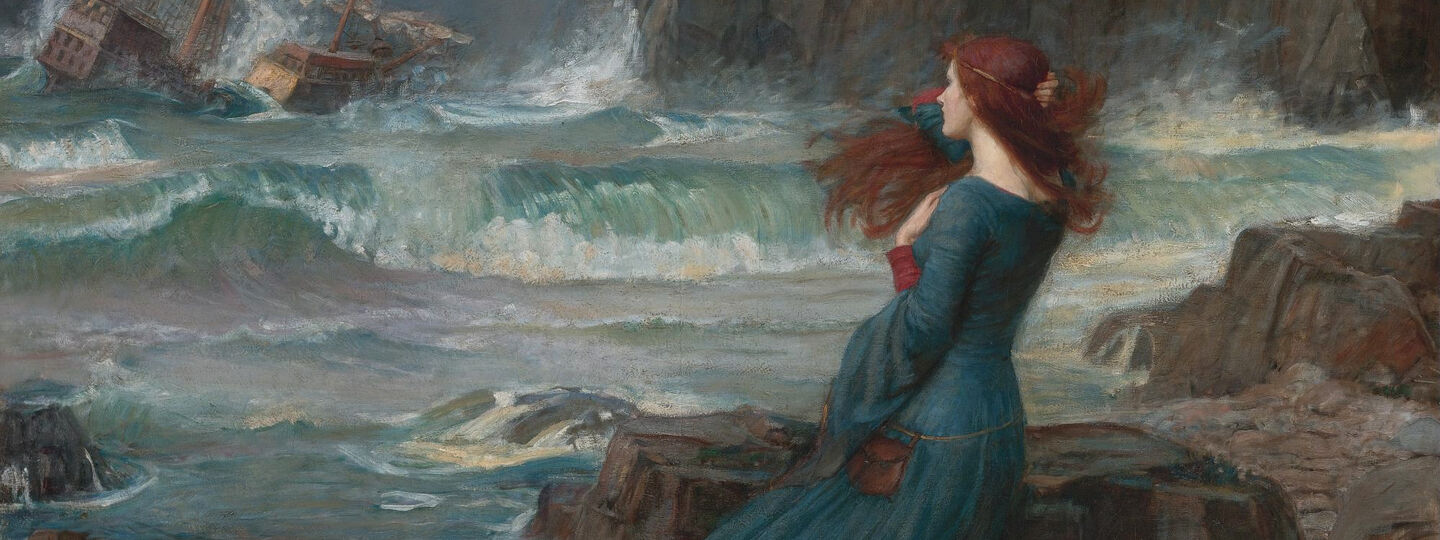
Info
Miranda – The Tempest
John William Waterhouse
1916
Private Collection
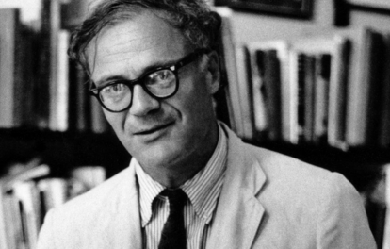
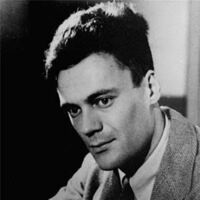
In 1917, Robert Lowell was born into one of Boston's oldest and most prominent families. He attended Harvard College for two years before transferring to Kenyon College, where he studied poetry under John Crowe Ransom and received an undergraduate degree in 1940. He took graduate courses at Louisiana State University where he studied with Robert Penn Warren and Cleanth Brooks. His first and second books, Land of Unlikeness (1944) and Lord Weary's Castle (for which he received a Pulitzer Prize in 1947, at the age of thirty), were influenced by his conversion from Episcopalianism to Catholicism and explored the dark side of America's Puritan legacy. Under the influence of Allen Tate and the New Critics, he wrote rigorously formal poetry that drew praise for its exceptionally powerful handling of meter and rhyme. Lowell was politically involved—he became a conscientious objector during the Second World War and was imprisoned as a result, and actively protested against the war in Vietnam—and his personal life was full of marital and psychological turmoil. He suffered from severe episodes of manic depression, for which he was repeatedly hospitalized. Partly in response to his frequent breakdowns, and partly due to the influence of such younger poets as W. D. Snodgrass and Allen Ginsberg, Lowell in the mid-fifties began to write more directly from personal experience, and loosened his adherence to traditional meter and form. The result was a watershed collection, Life Studies (1959), which forever changed the landscape of modern poetry, much as Eliot's The Waste Land had three decades before. Considered by many to be the most important poet in English of the second half of the twentieth century, Lowell continued to develop his work with sometimes uneven results, all along defining the restless center of American poetry, until his sudden death from a heart attack at age 60. Robert Lowell served as a Chancellor of The Academy of American Poets from 1962 until his death in 1977. Poetry Land of Unlikeness (1944) Lord Weary's Castle (1946) Poems, 1938-1949 (1950) The Mills of the Kavanaughs (1951) Life Studies (1959) Imitations (1961) For the Union Dead (1964) Selected Poems (1965) Near the Ocean (1967) The Voyage and Other Versions of Poems by Baudelaire (1968) Notebooks, 1967-1968 (1969) The Dolphin (1973) For Lizzie and Harriet (1973) History (1973) Selected Poems (1976) Day by Day (1977) Prose The Collected Prose (1987) Anthology Phaedra (1961) Prometheus Bound (1969) Drama The Old Glory (1965) References Poets.org - www.poets.org/poet.php/prmPID/10

I'm a writer, free-thinker, designer and mother of three. I'm working on my first book, a memoir which I am aiming to finish in 2016. Being a creative spirit, I've found life to be rocky at times... It took me a long time to finally dedicate myself to 'my work' - one day I hope it will be paid work (!) but for now it is enough just to put it out there in the hope that I inspire others. http://goingtoseed.blogspot.com.au - My blog 'Going To Seed' where I explore all sorts of ideas and progressive thinking...

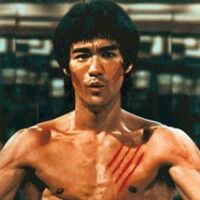
Bruce Jun Fan Lee was born in the hour of the Dragon, between 6 and 8 a.m., in the year of the Dragon on November 27, 1940 at the Jackson Street Hospital in San Francisco’s Chinatown. Today, a plaque in the hospital’s entry commemorates the place of his birth. Bruce’s birth, in the hour and the year of the Dragon, is a powerful symbol in Chinese astrology. It would be a strong omen of the powerful life that was to be lived by Bruce Lee and the explosive impact his life would have on countless others. Bruce was the fourth child born to Lee Hoi Chuen and his wife Grace Ho. He had two older sisters, Phoebe and Agnes, an older brother, Peter, and a younger brother, Robert. Lee Hoi Chuen was, by profession, a comedian in the Chinese opera and an actor in Cantonese films. At the time Bruce was born, Mr. and Mrs. Lee were on tour with the opera company in the United States. Thus, it was fortuitous for Bruce’s future that his birth took place in America, as he would return 18 years later to claim his birthright of American citizenship. Bruce’s parents gave him the name “Jun Fan.” Since it is Chinese custom to put the surname first, Bruce’s full name is written Lee Jun Fan. The true meaning of Jun Fan deserves an explanation as it, too, would foretell the journey of the newly born Lee son. Literally, JUN means “to arouse to the active state” or “to make prosperous.” It was a common middle name used by Hong Kong Chinese boys in those days, understandably because China and the Chinese people were very vulnerable at that time, and everyone, including Bruce’s parents, wanted the “sleeping lion of the East” to wake up. The FAN syllable refers to the Chinese name for San Francisco, but its true meaning is “fence of a garden” or “bordering subordinate countries of a big country.” During the period of the Ching Dynasty (1644-1911), many Chinese immigrated to Hawaii and San Francisco as laborers, and the implication became that the United States was FAN of the Great Ching Empire. Thus the true meaning of Bruce’s name--JUN FAN--was “to arouse and make FAN (the United States) prosperous.” The gut feeling of many Chinese at that time, who felt suppressed by and inferior to foreign powers, was that they wished to outshine the more superior countries and regain the Golden Age of China. Bruce’s parents wanted Bruce to have his name shine and shake the foreign countries, which he certainly succeeded in doing. The English name, BRUCE, was given to the baby boy by a nurse in the Jackson Street Hospital although he was never to use this name until he entered secondary school and began his study of the English language. The story goes that on the first day of English class, the students were asked to write down their English names, and Bruce, not knowing his name, copied the name of the student next to him. His family almost never used the name Bruce, especially in his growing up years when his nickname in the family was “SAI FON,” which literally means Little Peacock. This is a girl’s nickname, but in being applied to Bruce, it had a serious purpose. The first-born child of Mr. and Mrs. Lee had been a boy who did not survive infancy. Their belief was that if the gods did not favor the birth of a male child, the babe might be taken away. Thus, the name, Little Peacock, was used as a ruse to fool the gods into thinking that Bruce was a girl. It was a term of great affection within the family circle. At the age of three months, Lee Hoi Chuen, his wife Grace and baby Bruce returned to Hong Kong where Bruce would be raised until the age of 18. Probably because of the long ocean voyage and the change in climates, Bruce was not a strong child in his very early years, a condition that would change when he took up the study of gung fu at the age of 13. (Bruce always spelled his Chinese martial art as GUNG FU, which is the Cantonese pronunciation of the more commonly spelled Kung Fu, a Mandarin pronunciation.) Bruce’s most prominent memory of his early years was the occupation of Hong Kong by the Japanese during the World War II years (1941-1945). The residence of the Lee family was a flat at 218 Nathan Road in Kowloon directly across the street from the military encampment of the Japanese. Bruce’s mother often told the story of young Bruce, less than 5 years old, leaning precariously off the balcony of their home raising his fist to the Japanese Zeros circling above. Another nickname the family often applied to Bruce was “Mo Si Ting” which means “never sits still” and aptly described his personality. The Japanese occupation was Bruce’s first prescient memory, but Hong Kong had been a British Crown Colony since the late 1800’s. The English returned to power at the end of the war. It is not hard to see why young Bruce would have rebellious feelings toward foreign usurpation of his homeland. In his teenage years Bruce was exposed to the common practice of unfriendly taunting by English school boys who appeared to feel superior to the Chinese. It is not surprising that Bruce and his friends retaliated by returning the taunts and sometimes getting into fights with the English boys. This atmosphere laid the background for Bruce to begin his study of martial arts. At the age of 13, Bruce was introduced to Master Yip Man, a teacher of the Wing Chun style of gung fu. For five years Bruce studied diligently and became very proficient. He greatly revered Yip Man as a master teacher and wise man and frequently visited with him in later years. When he first took up gung fu, he used his new skills to pummel his adversaries, but it did not take long for Bruce to learn that the real value of martial arts training is that the skills of physical combat instill confidence to the point that one does not feel the constant need to defend one’s honor through fighting. In high school, Bruce, now no longer a weak child, was beginning to hone his body through hard training. One of his accomplishments was winning an interschool Boxing Championship against an English student in which the Marquis of Queensbury rules were followed and no kicking was allowed. Given the graceful movements, which would later be spectacularly displayed in his films, it is no surprise that Bruce was also a terrific dancer, and in 1958 he won the Hong Kong Cha Cha Championship. He studied dancing as assiduously as he did gung fu, keeping a notebook in which he had noted 108 different cha cha steps. It is easy to see that Bruce possessed the traits of self-discipline and hard work which would later hold him in good stead, even though at this stage he was not among the best academic students in the class. In addition to his studies, gung fu and dancing, Bruce had another side interest during his school years. He was a child actor under the tutelage of his father who must have known from an early age that Bruce had a streak of showmanship. Bruce’s very first role was as a babe in arms as he was carried onto the stage. By the time he was 18, he had appeared in 20 films. In those days movie making was not particularly glamorous or remunerative in Hong Kong, but Bruce loved acting. His mother often told stories of how Bruce was impossible to wake up to go to school, but just a tap on the shoulder at midnight would rouse him from his bed to go to the film studio. Movies were most often made at night in Hong Kong in order to minimize the sounds of the city. (See Filmography) At the age of 18, Bruce was looking for new vistas in his life, as were his parents who were discouraged that Bruce had not made more progress academically. It was common practice for high school graduates to go overseas to attend colleges, but that required excellent grades. Bruce’s brother and sister had come to the United States on student visas for their higher education. Although Bruce had not formally graduated from high school, and was more interested in gung fu, dancing and acting, his family decided that it was time for him to return to the land of his birth and find his future there. In April of 1959, with $100 in his pocket, Bruce boarded a steamship in the American Presidents Line and began his voyage to San Francisco. His passage was in the lower decks of the ship, but it didn’t take long for Bruce to be invited up to the first class accommodations to teach the passengers the cha cha. Landing in San Francisco, Bruce was armed with the knowledge that his dancing abilities might provide him a living, so his first job was as a dance instructor. One of his first students was Bob Lee, brother of James Y. Lee, who would become Bruce’s great friend, colleague in the martial arts, and eventually partner and Assistant Instructor of the Oakland Jun Fan Gung Fu Institute. Bruce did not stay long in San Francisco, but traveled to Seattle where a family friend, Ruby Chow, had a restaurant and had promised Bruce a job and living quarters above the restaurant. By now Bruce had left his acting and dancing passions behind and was intent on furthering his education. He enrolled at Edison Technical School where he fulfilled the requirements for the equivalent of high school graduation and then enrolled at the University of Washington. Typical of his personality traits, he attacked learning colloquial English as he had his martial arts training. Not content to speak like a foreigner, he applied himself to learning idiosyncrasies of speech. His library contained numerous books, underlined and dog-eared on common English idiomatic phrases. Although he never quite lost the hint of an English accent when speaking, his ability to turn a phrase or “be cool” was amazing for one who did not speak a word of the language until the age of 12. Bruce’s written English skills exceeded his spoken language abilities at first because he had been well tutored in the King’s proper English prose in Hong Kong. When his wife-to-be met him at the University of Washington, he easily edited her English papers for correct grammar and syntax. At the university, Bruce majored in philosophy. His passion for gung fu inspired a desire to delve into the philosophical underpinnings of the arts. Many of his written essays during those years would relate philosophical principles to certain martial arts techniques. For instance, he wrote often about the principles of yin and yang and how they could translate into hard and soft physical movements. In this way he was completing his education as a true martial artist in the time-honored Chinese sense of one whose knowledge encompasses the physical, mental and spiritual aspects of the arts. In the three years that Bruce studied at the university, he supported himself by teaching gung fu, having by this time given up working in the restaurant, stuffing newspapers or various other odd jobs. He and a few of his new friends would meet in parking lots, garages or any open space and play around with gung fu techniques. In the late ‘50’s and early ‘60’s, “gung fu” was an unknown term; in fact, the only physical art that might be listed in the yellow pages was Judo. Even the name “karate” was not a familiar term. The small group of friends was intrigued by this art called gung fu. One of the first students in this group was Jesse Glover who continues to teach some of Bruce’s early techniques to this day. It was during this period that Bruce and Taky Kimura became friends. Not only would Taky become Bruce’s gung fu student and the first Assistant Instructor he ever had, but the friendship forged between the two men was a source of love and strength for both of them. Taky Kimura has continued to be Bruce’s staunch supporter, devoting endless hours to preserving his art and philosophy throughout the 30 years since Bruce’s passing. The small circle of friends that Bruce had made encouraged him to open a real school of gung fu and charge a nominal sum for teaching in order to support himself while attending school. Renting a small basement room with a half door entry from 8th Street in Seattle’s Chinatown, Bruce decided to call his school the Jun Fan Gung Fu Institute. In 1963, having established a dedicated group of students and having given numerous demonstrations at the university, Bruce thought he might attract more students by opening a larger school at 4750 University Way where he also lived in a small room in the back of the kwoon. One of his students in 1963 was a freshman at the University of Washington, Linda Emery. Linda knew who Bruce was from his guest lectures in Chinese philosophy at Garfield High School, and in the summer after graduating, at the urging of her Chinese girlfriend, SueAnn Kay, Linda started taking gung fu lessons. It wasn’t long before the instructor became more interesting than the lessons. Bruce and Linda were married in 1964. By this time, Bruce had decided to make a career out of teaching gung fu. His plan involved opening a number of schools around the country and training assistant instructors to teach in his absence. Leaving his Seattle school in the hands of Taky Kimura, Bruce and Linda moved to Oakland where Bruce opened his second school with James Lee. The two men had formed a friendship over the years with each traveling frequently between Seattle and Oakland. James was a gung fu man from way back, but when he saw Bruce’s stuff he was so impressed that he wanted to join with him in starting a school. Thus the second branch of the Jun Fan Gung Fu Institute was founded. Having now been in the United States for five years, Bruce had left behind any thought of acting as a career, and devoted himself completely to his choice of martial arts as a profession. Up to this time Bruce’s gung fu consisted mostly of wing chun techniques and theory he had learned from Yip Man. Gradually though, because of his burgeoning interest in the philosophy of martial arts and his desire for self improvement, he was expanding his repertoire. A particular incident accelerated his process of self-exploration. In 1964 Bruce was challenged by some gung fu men from San Francisco who objected to his teaching of non-Chinese students. Bruce accepted the challenge and the men arrived at the kwoon in Oakland on the appointed day for the face off. The terms were that if Bruce were defeated he would stop teaching the non Chinese. It was a short fight with the gung fu man from The City giving up when Bruce had him pinned to the floor after about three minutes. The significance of this fight was that Bruce was extremely disappointed in his own performance. Even though he had won, he was winded and discouraged about his inability to put the man away in under three minutes. This marked a turning point for Bruce in his exploration of his martial art and the enhancement of his physical fitness. Thus began the evolution of Jeet Kune Do. Just as Bruce was cementing his plans to expand his martial arts schools, fate stepped in to move his life in another direction. In the preceding years Bruce had made the acquaintance of Ed Parker, widely regarded as the father of American Kenpo. In August of 1964, Ed invited Bruce to Long Beach, CA to give a demonstration at his First International Karate Tournament. Bruce’s exhibition was spectacular. He used Taky as his partner and demonstrated his blindfolded chi sao techniques. At one point he used a member of the audience to show the power of his one-inch punch. Such was Bruce’s charisma that he spoke conversationally, injecting humor into his comments while at the same time emphatically demonstrating his power, precision and speed. A member of the audience was Jay Sebring, a well-known hair stylist to the stars. As fate would have it, the following week, Jay was styling the hair of William Dozier, an established producer. Mr. Dozier mentioned to Jay that he was looking for an actor to play the part of Charlie Chan’s son in a series to be entitled, “Number One Son.” Jay told the producer about having seen this spectacular young Chinese man giving a gung fu demonstration just a few nights before. Mr. Dozier obtained a copy of the film that was taken at Ed Parker’s tournament. The next week he called Bruce at home in Oakland and invited him to come to Los Angeles for a screen test. Bruce’s screen test was impressive, but in the meantime plans for “Number One Son” had been scuttled. Mr. Dozier was now immersed in the production of the “Batman” TV series, but still he wanted to hang onto Bruce. The plan was that if Batman was successful for more than one season, then Dozier wanted to capitalize on the popularity of another comic book character, “The Green Hornet” with Bruce playing the part of Kato. To keep Bruce from signing with someone else, Mr. Dozier paid him an $1,800 option for one year. About this time things were changing in Bruce’s personal life as well. His own number one son, Brandon Bruce Lee, was born February 1, 1965. One week later Bruce’s father, Lee Hoi Chuen, died in Hong Kong. Bruce was pleased that his father had known about the birth of the first grandchild in the Lee family. Given these events and the arrival of the lump sum option money, Bruce decided it was time to make a trip to Hong Kong to visit his mother and introduce the family to both Linda and Brandon. They stayed in the family flat on Nathan Road for four months. While there Bruce was able to “play gung fu” with Master Yip Man and the students of the wing chun school. Upon leaving Hong Kong, Bruce and his family traveled to Seattle where they stayed with Linda’s family for another four months. During this time Bruce spent a great deal of time with Taky and the students at the Seattle school. After Seattle, the family moved back to James Lee’s house in Oakland for several months before making the move to Los Angeles. In Los Angeles, he got better acquainted with Dan Inosanto whom he had known through Ed Parker. It was not long before Bruce opened his third gung fu school with Dan as his assistant instructor During this entire year of traveling and working closely with his best gung fu colleagues, Bruce was going through a period of intense self-exploration. Bruce was always a goal setter. However, he was never obstinate about his goals and if the wind changed, he could steer his life on a different course. He was in a period of transition at this time, deciding whether to make acting his career or continue on the path of opening nationwide schools of gung fu. His decision was to focus on acting and see if he could turn it into a productive career. He often said his passion was pursuit of the martial arts, but his career choice was filmmaking. The chief reason that Bruce turned his attention to acting was that he had lost interest in spreading his way of martial arts in a wide scale manner. He had begun to see that if his schools became more numerous, he would lose control of the quality of the teaching. Bruce loved to teach gung fu, and he loved his students. Countless hours were spent in his backyard or in the kwoon, one on one with students. They were like members of the family. His love for his martial arts was not something he wanted to turn into a business. In 1966, production started on “The Green Hornet.” The filming lasted for six months, the series for one season, and that was the end of it. Bruce’s take home pay was $313 a week, which seemed like a lot of money at the time. When they first started filming, the cameras were not able to record the fight scenes clearly because of Bruce’s speed. They asked him to slow down to capture the action. Bruce’s gung fu moves thrilled audiences, and the series became a sought-after collector item in later years. Bruce maintained a friendship with Van Williams who played the part of Britt Reid. The years between 1967 and 1971 were lean years for the Lee family. Bruce worked hard at furthering his acting career and did get some roles in a few TV series and films. (See Filmography) To support the family, Bruce taught private lessons in Jeet Kune Do, often to people in the entertainment industry. Some of his clients included Steve McQueen, James Coburn, Stirling Silliphant, Sy Weintraub, Ted Ashley, Joe Hyams, James Garner and others. A great blessing was the arrival of a daughter, Shannon Emery Lee, on April 19, 1969. She brought great joy into the Lee household and soon had her daddy around her little finger. During this time Bruce continued the process he had started in Oakland in 1964, the evolution of his way of martial arts, which he called Jeet Kune Do, “The Way of The Intercepting Fist.” He read and wrote extensively his thoughts about physical combat, the psychology of fighting, the philosophical roots of martial arts, and about motivation, self-actualization and liberation of the individual. Thanks to this period in his life, which was at times frustrating, we know more about the mind of Bruce Lee through his writings. Bruce was devoted to physical culture and trained devotedly. In addition to actual sparring with his students, he believed in strenuous aerobic workouts and weight training. His abdominal and forearm workouts were particularly intense. There was rarely a time when Bruce was doing nothing—in fact, he was often seen reading a book, doing forearm curls and watching a boxing film at the same time. He also paid strict attention to his food consumption and took vitamins and Chinese herbs at times. It was actually his zealousness that led to an injury that was to become a chronic source of pain for the rest of his life. On a day in 1970, without warming up, something he always did, Bruce picked up a 125-pound barbell and did a “good morning” exercise. That consists of resting the barbell on one’s shoulders and bending straight over at the waist. After much pain and many tests, it was determined that he had sustained an injury to the fourth sacral nerve. He was ordered to complete bed rest and told that undoubtedly he would never do gung fu again. For the next six months, Bruce stayed in bed. It was an extremely frustrating, depressing and painful time, and a time to redefine goals. It was also during this time that he did a great deal of the writing that has been preserved. After several months, Bruce instituted his own recovery program and began walking, gingerly at first, and gradually built up his strength. He was determined that he would do his beloved gung fu again. As can be seen by his later films, he did recover full use of his body, but he constantly had to take measures like icing, massage and rest to take care of his back. Bruce was always imagining story ideas. One of the projects he had been working on was the idea of a television series set in the Old West, featuring an Eastern monk who roamed the countryside solving problems. He pitched the idea at Warner Bros. and it was enthusiastically received. The producers talked at great length to Bruce about the proposed series always with the intent that Bruce would play the role of the Eastern wise man. In the end, the role was not offered to Bruce; instead it went to David Carradine. The series was “Kung Fu.” The studio claimed that a Chinese man was not a bankable star at that time. Hugely disappointed, Bruce sought other ways to break down the studio doors. Along with two of his students, Stirling Silliphant, the famed writer, and actor, James Coburn, Bruce collaborated on a script for which he wrote the original story line. The three of them met weekly to refine the script. It was to be called “The Silent Flute.” Again, Warner Bros. was interested and sent the three to India to look for locations. Unfortunately the right locations could not be found, the studio backed off, and the project was put on the back burner. Thwarted again in his effort to make a go of his acting career, Bruce devised a new approach to his goal. In 1970, when Bruce was getting his strength back from his back injury, he took a trip to Hong Kong with son Brandon, age five. He was surprised when he was greeted as “Kato,” the local boy who had been on American TV. He was asked to appear on TV talk shows. He was not aware that Hong Kong film producers were viewing him with interest. In 1971, about the time that “The Silent Flute” failed to materialize, Hong Kong producer Raymond Chow contacted Bruce to interest him in doing two films for Golden Harvest. Bruce decided to do it, reasoning that if he couldn’t enter the front door of the American studios, he would go to Hong Kong, establish himself there and come back in through the side door. In the summer of 1971, Bruce left Los Angeles to fly to Hong Kong, then on to Thailand for the making of “The Big Boss,” later called “Fists of Fury.” Between Hong Kong and Thailand, producer Run Run Shaw attempted to intercede and woo Bruce away from Golden Harvest. But Bruce had signed a deal so he stayed with Raymond Chow. Bruce’s family did not accompany him on this trip because the village where the film was made was not suitable for small children. It was also felt that if this film was not a hit, Bruce might be back in L.A. sooner than expected. Although the working conditions were difficult, and the production quality substandard to what Bruce was accustomed, “The Big Boss” was a huge success. The premier took place at midnight, as was Hong Kong custom. Chinese audiences are infamous for expressing their emotions during films—both positive and negative. The entire cast and production team were very nervous, no one more so than Bruce. At the end of the showing, the entire audience was silent for a moment, then erupted in cheers and hailed their new hero who was viewing from the back of the theater. In September of 1971, with filming set to commence on the second of the contractual films, Bruce moved his family over to Hong Kong and prepared to sell their Los Angeles home. “Fist of Fury,” also called “Chinese Connection” was an even bigger success than the first film breaking all-time box office records. Now that Bruce had completed his contract with Golden Harvest, and had become a bankable commodity, he could begin to have more input into the quality of his films. For the third film, he formed a partnership with Raymond Chow, called Concord Productions. Not only did Bruce write “The Way of the Dragon,” also called “Return of the Dragon,” but he directed and produced it as well. Once again, the film broke records and now, Hollywood was listening. In the fall of 1972, Bruce began filming “The Game of Death,” a story he once again envisioned. The filming was interrupted by the culmination of a deal with Warner Bros. to make the first ever Hong Kong-American co-production. The deal was facilitated mainly by Bruce’s personal relationship with Warner Bros. president, Ted Ashley and by Bruce’s successes in Hong Kong. It was an exciting moment and a turning point in Hong Kong’s film industry. “The Game of Death” was put on hold to make way for the filming of “Enter the Dragon.” Filming “Enter the Dragon” was not an easy undertaking. The American cast and crew and their Chinese counterparts experienced language problems and production difficulties. It was a stressful time for Bruce too as he wanted the film to be especially good and well accepted by Western audiences. “Enter the Dragon” was due to premier at Hollywood’s Chinese theater in August of 1973. Unfortunately, Bruce would not live to see the opening of his film, nor would he experience the accumulated success of more than thirty years of all his films’ popularity. On July 20, 1973, Bruce had a minor headache. He was offered a prescription painkiller called Equagesic. After taking the pill, he went to lie down and lapsed into a coma. He was unable to be revived. Extensive forensic pathology was done to determine the cause of his death, which was not immediately apparent. A nine-day coroner’s inquest was held with testimony given by renowned pathologists flown in from around the world. The determination was that Bruce had a hypersensitive reaction to an ingredient in the pain medication that caused a swelling of the fluid on the brain, resulting in a coma and death. The world lost a brilliant star and an evolved human being that day. His spirit remains an inspiration to untold numbers of people around the world. Copyright @ 2006 Bruce Lee Foundation References Bruce Lee Foundation - http://bruceleefoundation.com/index.cfm/pid/10585

Hello, my name is Liana Medina and as you may have already read i am a beginner poet. I never thought i was able to write poetry, until one day i wrote Darkness's Grasp, which is one of the poems you will read soon. I have recently been keeping a book of all my poems and currently have about 34 poems that i have written this year! Now i will warn you that some of my poetry is quite grotesc, and some have come from dreams and nightmares i have had. So that being said I would love some input and some advice on how to grow as a poet. so please feel free to let me know what you think, and i will be more than happy to the same for you.
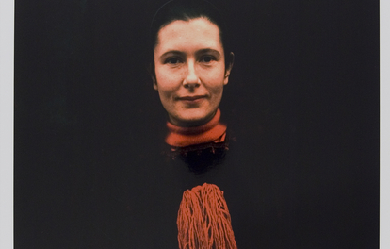
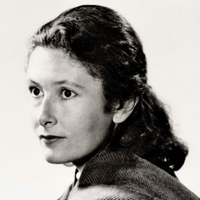
Denise Levertov (24 October 1923– 20 December 1997) was a British-born American poet. Levertov, who was educated at home, showed an enthusiasm for writing from an early age and studied ballet, art, piano and French as well as standard subjects. She wrote about the strangeness she felt growing up part Jewish, German, Welsh and English, but not fully belonging to any of these identities. She notes that it lent her a sense of being special rather than excluded: “I knew before I was ten that I was an artist-person and I had a destiny”.
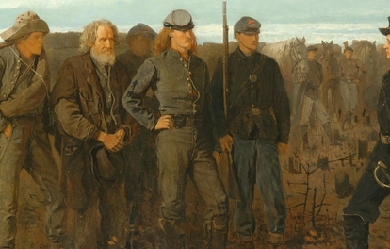
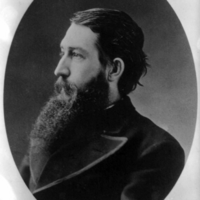
Sidney Clopton Lanier (February 3, 1842– September 7, 1881) was an American musician, poet and author. He served in the Confederate army, worked on a blockade running ship for which he was imprisoned (resulting in his catching tuberculosis), taught, worked at a hotel where he gave musical performances, was a church organist, and worked as a lawyer. As a poet he used dialects. He became a flautist and sold poems to publications. He eventually became a university professor and is known for his adaptation of musical meter to poetry. Many schools, other structures and two lakes are named for him. Biography Sidney Clopton Lanier was born February 3, 1842, in Macon, Georgia, to parents Robert Sampson Lanier and Mary Jane Anderson; he was mostly of English ancestry. His distant French Huguenot ancestors immigrated to England in the 16th century, fleeing religious persecution. He began playing the flute at an early age, and his love of that musical instrument continued throughout his life. He attended Oglethorpe University, which at the time was near Milledgeville, Georgia, and he was a member of the Sigma Alpha Epsilon fraternity. He graduated first in his class shortly before the outbreak of the American Civil War. He fought in the American Civil War (1861–65), primarily in the tidewater region of Virginia, where he served in the Confederate signal corps. Later, he and his brother Clifford served as pilots aboard English blockade runners. On one of these voyages, his ship was boarded. Refusing to take the advice of the British officers on board to don one of their uniforms and pretend to be one of them, he was captured. He was incarcerated in a military prison at Point Lookout in Maryland, where he contracted tuberculosis (generally known as “consumption” at the time). He suffered greatly from this disease, then incurable and usually fatal, for the rest of his life. Shortly after the war, he taught school briefly, then moved to Montgomery, Alabama, where he worked as a desk clerk at The Exchange Hotel and also performed as a musician. He was the regular organist at The First Presbyterian Church in nearby Prattville. He wrote his only novel, Tiger Lilies (1867) while in Alabama. This novel was partly autobiographical, describing a stay in 1860 at his grandfather’s Montvale Springs resort hotel near Knoxville, Tennessee. In 1867, he moved to Prattville, at that time a small town just north of Montgomery, where he taught and served as principal of a school. He married Mary Day of Macon in 1867 and moved back to his hometown, where he began working in his father’s law office. After taking and passing the Georgia bar, Lanier practiced as a lawyer for several years. During this period he wrote a number of poems, using the “cracker” and “negro” dialects of his day, about poor white and black farmers in the Reconstruction South. He traveled extensively through southern and eastern portions of the United States in search of a cure for his tuberculosis. While on one such journey in Texas, he rediscovered his native and untutored talent for the flute and decided to travel to the northeast in hopes of finding employment as a musician in an orchestra. Unable to find work in New York City, Philadelphia, or Boston, he signed on to play flute for the Peabody Orchestra in Baltimore, Maryland, shortly after its organization. He taught himself musical notation and quickly rose to the position of first flautist. He was famous in his day for his performances of a personal composition for the flute called “Black Birds”, which mimics the song of that species. In an effort to support Mary and their three sons, he also wrote poetry for magazines. His most famous poems were “Corn” (1875), “The Symphony” (1875), “Centennial Meditation” (1876), “The Song of the Chattahoochee” (1877), “The Marshes of Glynn”, (1878) and “Sunrise” (1881). The latter two poems are generally considered his greatest works. They are part of an unfinished set of lyrical nature poems known as the “Hymns of the Marshes”, which describe the vast, open salt marshes of Glynn County on the coast of Georgia. (The longest bridge in Georgia is in Glynn County and is named for Lanier.) Later life Late in his life, he became a student, lecturer, and, finally, a faculty member at the Johns Hopkins University in Baltimore, specializing in the works of the English novelists, Shakespeare, the Elizabethan sonneteers, Chaucer, and the Old English poets. He published a series of lectures entitled The English Novel (published posthumously in 1883) and a book entitled The Science of English Verse (1880), in which he developed a novel theory exploring the connections between musical notation and meter in poetry. Lanier finally succumbed to complications caused by his tuberculosis on September 7, 1881, while convalescing with his family near Lynn, North Carolina. He was 39. Lanier is buried in Green Mount Cemetery in Baltimore. Writing style and literary theory With his theory connecting musical notation with poetic meter, and also being described as a deft metrical technical, in his own words ‘daring with his poem ’Special Pleading’ to give myself such freedom as I desired, in my own style’ and also by developing a unique style of poetry written in logaoedic dactyls, which was strongly influenced by the works of his beloved Anglo-Saxon poets. He wrote several of his greatest poems in this meter, including “Revenge of Hamish” (1878), “The Marshes of Glynn” and “Sunrise”. In Lanier’s hands, the logaoedic dactylic meter led to a free-form, almost prose-like style of poetry that was greatly admired by Henry Wadsworth Longfellow, Bayard Taylor, Charlotte Cushman, and other leading poets and critics of the day. A similar poetical meter was independently developed by Gerard Manley Hopkins at about the same time (there is no evidence that they knew each other or that either of them had read any of the other’s works). Lanier also published essays on other literary and musical topics and a notable series of four redactions of literary works about knightly combat and chivalry in modernized language more appealing to the boys of his day: The Boy’s Froissart (1878), a retelling of Jean Froissart’s Froissart’s Chronicles, which tell of adventure, battle and custom in medieval England, France and Spain The Boy’s King Arthur (1880), based on Sir Thomas Malory’s compilation of the legends of King Arthur and the Knights of the Round Table The Boy’s Mabinogion (1881), based on the early Welsh legends of King Arthur, as retold in the Red Book of Hergest. The Boy’s Percy (published posthumously in 1882), consisting of old ballads of war, adventure and love based on Bishop Thomas Percy’s Reliques of Ancient English Poetry. He also wrote two travelogues that were widely read at the time, entitled Florida: Its Scenery, Climate and History (1875) and Sketches of India (1876) (although he never visited India). Legacy and honors The Sidney Lanier Cottage in Macon, Georgia is listed on the National Register of Historic Places. The square, stone Monument to Poets of Georgia, located between 7th & 8th St. in Augusta, lists Lanier as one of Georgia’s four great poets, all of whom saw Confederate service. The southeastern side bears this inscription: "To Sidney Lanier 1842–1880. The catholic man who hath nightly won God out of knowledge and good out of infinite pain and sight out of Blindness and Purity out of stain." The other poets on the monument are James Ryder Randall, Fr. Abram Ryan, and Paul Hayne. Baltimore honored Lanier with a large and elaborate bronze and granite sculptural monument, created by Hans K. Schuler and located on the campus of the Johns Hopkins University. In addition to the monument at Johns Hopkins, Lanier was also later memorialized on the campus of Duke University in Durham, North Carolina. Upon the construction of the iconic Duke Chapel between 1930 and 1935 on the university’s West Campus, a statue of Lanier was included alongside two fellow prominent Southerners, Thomas Jefferson and Robert E. Lee. This statue, which appears to show a Lanier older than the 39 years he actually lived, is situated on the right side of the portico leading into the Chapel narthex. It is prominently featured on the cover of the 2010 autobiographical memoir Hannah’s Child, by Stanley Hauerwas, a Methodist theologian teaching at Duke Divinity School. Lanier’s poem “The Marshes of Glynn” is the inspiration for a cantata by the same name that was created by the modern English composer Andrew Downes to celebrate the Royal Opening of the Adrian Boult Hall in Birmingham, England, in 1986. Piers Anthony used Lanier, his life, and his poetry in his science-fiction novel Macroscope (1969). He quotes from “The Marshes of Glynn” and other references appear throughout the novel. Several entities have been named for Sidney Lanier: Inhabited places Lanier Heights Neighborhood, Washington, D.C. Lanier County, Georgia Indirectly, USS Lanier, which was named for the county. Bodies of water Lake Lanier, operated by the U.S. Army Corps of Engineers northeast of Atlanta, Georgia (The lake was created by the damming of the Chattahoochee River, a river that was the subject of one of Lanier’s poems.) Lake Lanier in Tryon, North Carolina Schools Sidney Lanier High School in Montgomery, Alabama Sidney Lanier School in Gainesville, Florida Lanier University short-lived university, first Baptist, then owned by the Ku Klux Klan, in Atlanta, Georgia The Sidney Lanier Building (previously Sidney Lanier Elementary School) on the campus of Glynn Academy, in Brunswick, Georgia Lanier Middle School in Buford, Georgia Lanier Elementary School in Gainesville, Georgia Sidney Lanier Elementary School in Tulsa, Oklahoma Sidney Lanier High School in Austin, Texas Sidney Lanier Expressive Arts Vanguard Elementary School in Dallas, Texas Lanier Middle School in Houston, Texas Lanier High School in San Antonio, Texas Lanier Middle School in Fairfax, Virginia Sidney Lanier Elementary School in Tampa, Florida Lanier Technical College in Oakwood, Georgia Other Sidney Lanier Cottage, the birthplace of Lanier, in Macon, Georgia Sidney Lanier Bridge over the South Brunswick River in Brunswick, Georgia Lanier’s Oak in Brunswick, Georgia The Lanier Library, Tryon, North Carolina. Lanier’s widow, Mary, donated two of his volumes of poetry to begin the collection when the library was established in 1890. Sidney Lanier Camp, Eliot, Maine. Sidney Lanier Boulevard in Duluth, GA References Wikipedia—https://en.wikipedia.org/wiki/Sidney_Lanier

1. I really like sleeping 2. Music is my life 3. I love watching movies 4. I write poems to express what I am feeling at the moment 5. I abandoned my homework when I am too stressed out about something...like I sleep through it all until my head is clear. 6. I cry easily 7. I like to make everyone happy...I would do anything to make them smile 8. I get embarrassed easily 9. I am not the talkative type......unless I am comfortable around that person 10. Lastly, I do not like to burden anyone
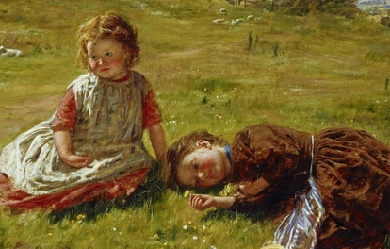
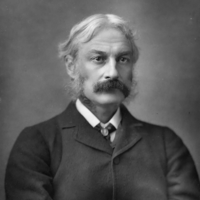
Andrew Lang (31 March 1844– 20 July 1912) was a Scottish poet, novelist, literary critic, and contributor to the field of anthropology. He is best known as a collector of folk and fairy tales. The Andrew Lang lectures at the University of St Andrews are named after him. Biography Lang was born in Selkirk. He was the eldest of the eight children born to John Lang, the town clerk of Selkirk, and his wife Jane Plenderleath Sellar, who was the daughter of Patrick Sellar, factor to the first duke of Sutherland. On 17 April 1875, he married Leonora Blanche Alleyne, youngest daughter of C. T. Alleyne of Clifton and Barbados. She was (or should have been) variously credited as author, collaborator, or translator of Lang’s Color/Rainbow Fairy Books which he edited. He was educated at Selkirk Grammar School, Loretto, and at the Edinburgh Academy, St Andrews University and at Balliol College, Oxford, where he took a first class in the final classical schools in 1868, becoming a fellow and subsequently honorary fellow of Merton College. He soon made a reputation as one of the most able and versatile writers of the day as a journalist, poet, critic, and historian. In 1906, he was elected FBA. He died of angina pectoris at the Tor-na-Coille Hotel in Banchory, Banchory, survived by his wife. He was buried in the cathedral precincts at St Andrews. Scholarship Folklore and anthropology Lang is now chiefly known for his publications on folklore, mythology, and religion. The interest in folklore was from early life; he read John Ferguson McLennan before coming to Oxford, and then was influenced by E. B. Tylor. The earliest of his publications is Custom and Myth (1884). In Myth, Ritual and Religion (1887) he explained the “irrational” elements of mythology as survivals from more primitive forms. Lang’s Making of Religion was heavily influenced by the 18th century idea of the “noble savage”: in it, he maintained the existence of high spiritual ideas among so-called “savage” races, drawing parallels with the contemporary interest in occult phenomena in England. His Blue Fairy Book (1889) was a beautifully produced and illustrated edition of fairy tales that has become a classic. This was followed by many other collections of fairy tales, collectively known as Andrew Lang’s Fairy Books. In the preface of the Lilac Fairy Book he credits his wife with translating and transcribing most of the stories in the collections. Lang examined the origins of totemism in Social Origins (1903). Psychical research Lang was one of the founders of “psychical research” and his other writings on anthropology include The Book of Dreams and Ghosts (1897), Magic and Religion (1901) and The Secret of the Totem (1905). He served as President of the Society for Psychical Research in 1911. Classical scholarship He collaborated with S. H. Butcher in a prose translation (1879) of Homer’s Odyssey, and with E. Myers and Walter Leaf in a prose version (1883) of the Iliad, both still noted for their archaic but attractive style. He was a Homeric scholar of conservative views. Other works include Homer and the Study of Greek found in Essays in Little (1891), Homer and the Epic (1893); a prose translation of The Homeric Hymns (1899), with literary and mythological essays in which he draws parallels between Greek myths and other mythologies; Homer and his Age (1906); and “Homer and Anthropology” (1908). Historian Lang’s writings on Scottish history are characterised by a scholarly care for detail, a piquant literary style, and a gift for disentangling complicated questions. The Mystery of Mary Stuart (1901) was a consideration of the fresh light thrown on Mary, Queen of Scots, by the Lennox manuscripts in the University Library, Cambridge, approving of her and criticising her accusers. He also wrote monographs on The Portraits and Jewels of Mary Stuart (1906) and James VI and the Gowrie Mystery (1902). The somewhat unfavourable view of John Knox presented in his book John Knox and the Reformation (1905) aroused considerable controversy. He gave new information about the continental career of the Young Pretender in Pickle the Spy (1897), an account of Alestair Ruadh MacDonnell, whom he identified with Pickle, a notorious Hanoverian spy. This was followed by The Companions of Pickle (1898) and a monograph on Prince Charles Edward (1900). In 1900 he began a History of Scotland from the Roman Occupation (1900). The Valet’s Tragedy (1903), which takes its title from an essay on Dumas’s Man in the Iron Mask, collects twelve papers on historical mysteries, and A Monk of Fife (1896) is a fictitious narrative purporting to be written by a young Scot in France in 1429–1431. Other writings Lang’s earliest publication was a volume of metrical experiments, The Ballads and Lyrics of Old France (1872), and this was followed at intervals by other volumes of dainty verse, Ballades in Blue China (1880, enlarged edition, 1888), Ballads and Verses Vain (1884), selected by Mr Austin Dobson; Rhymes à la Mode (1884), Grass of Parnassus (1888), Ban and Arrière Ban (1894), New Collected Rhymes (1905). Lang was active as a journalist in various ways, ranging from sparkling “leaders” for the Daily News to miscellaneous articles for the Morning Post, and for many years he was literary editor of Longman’s Magazine; no critic was in more request, whether for occasional articles and introductions to new editions or as editor of dainty reprints. He edited The Poems and Songs of Robert Burns (1896), and was responsible for the Life and Letters (1897) of JG Lockhart, and The Life, Letters and Diaries (1890) of Sir Stafford Northcote, 1st Earl of Iddesleigh. Lang discussed literary subjects with the same humour and acidity that marked his criticism of fellow folklorists, in Books and Bookmen (1886), Letters to Dead Authors (1886), Letters on Literature (1889), etc. Works To 1884 * St Leonards Magazine. 1863. This was a reprint of several articles that appeared in the St Leonards Magazine that Lang edited at St Andrews University. Includes the following Lang contributions: Pages 10–13, Dawgley Manor; A sentimental burlesque; Pages 25–26, Nugae Catulus; Pages 27–30, Popular Philosophies; pages 43–50 are ‘Papers by Eminent Contributors’, seven short parodies of which six are by Lang. * The Ballads and Lyrics of Old France (1872) * The Odyssey Of Homer Rendered Into English Prose (1879) translator with Samuel Henry Butcher * Aristotle’s Politics Books I. III. IV. (VII.). The Text of Bekker. With an English translation by W. E. Bolland. Together with short introductory essays by A. Lang To page 106 are Lang’s Essays, pp. 107–305 are the translation. Lang’s essays without the translated text were later published as The Politics of Aristotle. Introductory Essays. 1886. * The Folklore of France (1878) * Specimens of a Translation of Theocritus. 1879. This was an advance issue of extracts from Theocritus, Bion and Moschus rendered into English prose * XXII Ballades in Blue China (1880) * Oxford. Brief historical & descriptive notes (1880). The 1915 edition of this work was illustrated by painter George Francis Carline. * 'Theocritus Bion and Moschus. Rendered into English Prose with an Introductory Essay. 1880. * Notes by Mr A. Lang on a collection of pictures by Mr J. E.Millais R.A. exhibited at the Fine Arts Society Rooms. 148 New Bond Street. 1881. * The Library: with a chapter on modern illustrated books. 1881. * The Black Thief. A new and original drama (Adapted from the Irish) in four acts. (1882) * Helen of Troy, her life and translation. Done into rhyme from the Greek books. 1882. * The Most Pleasant and Delectable Tale of the Marriage of Cupid and Psyche (1882) with William Aldington * The Iliad of Homer, a prose translation (1883) with Walter Leaf and Ernest Myers * Custom and Myth (1884) * The Princess Nobody: A Tale of Fairyland (1884) * Ballads and Verses Vain (1884) selected by Austin Dobson * Rhymes à la Mode (1884) * Much Darker Days. By A. Huge Longway. (1884) * Household tales; their origin, diffusion, and relations to the higher myths. [1884]. Separate pre-publication issue of the “introduction” to Bohn’s edition of Grimm’s Household tales. 1885–1889 * That Very Mab (1885) with May Kendall * Books and Bookmen (1886) * Letters to Dead Authors (1886) * In the Wrong Paradise (1886) stories * The Mark of Cain (1886) novel * Lines on the inaugural meeting of the Shelley Society. Reprinted for private distribution from the Saturday Review of 13 March 1886 and edited by Thomas Wise (1886) * La Mythologie Traduit de L’Anglais par Léon Léon Parmentier. Avec une préface par Charles Michel et des Additions de l’auteur. (1886) Never published as a complete book in English, although there was a Polish translation. The first 170 pages is a translation of the article in the 'Encyclopædia Britannica’. The rest is a combination of articles and material from 'Custom and Myth’. * Almae matres (1887) * He (1887 with Walter Herries Pollock) parody * Aucassin and Nicolette (1887) * Myth, Ritual and Religion (2 vols., 1887) * Johnny Nut and the Golden Goose. Done into English from the French of Charles Deulin (1887) * Grass of Parnassus. Rhymes old and new. (1888) * Perrault’s Popular Tales (1888) * Gold of Fairnilee (1888) * Pictures at Play or Dialogues of the Galleries (1888) with W. E. Henley * Prince Prigio (1889) * The Blue Fairy Book (1889) (illustrations by Henry J. Ford) * Letters on Literature (1889) * Lost Leaders (1889) * Ode to Golf. Contribution to On the Links; being Golfing Stories by various hands (1889) * The Dead Leman and other tales from the French (1889) translator with Paul Sylvester 1890–1899 * The Red Fairy Book (1890) * The World’s Desire (1890) with H. Rider Haggard * Old Friends: Essays in Epistolary Parody (1890) * The Strife of Love in a Dream, Being the Elizabethan Version of the First Book of the Hypnerotomachia of Francesco Colonna (1890) * The Life, Letters and Diaries of Sir Stafford Northcote, 1st Earl of Iddesleigh (1890) * Etudes traditionnistes (1890) * How to Fail in Literature (1890) * The Blue Poetry Book (1891) * Essays in Little (1891) * On Calais Sands (1891) * The Green Fairy Book (1892) * The Library with a Chapter on Modern English Illustrated Books (1892) with Austin Dobson * William Young Sellar (1892) * The True Story Book (1893) * Homer and the Epic (1893) * Prince Ricardo of Pantouflia (1893) * Waverley Novels (by Walter Scott), 48 volumes (1893) editor * St. Andrews (1893) * Montezuma’s Daughter (1893) with H. Rider Haggard * Kirk’s Secret Commonwealth (1893) * The Tercentenary of Izaak Walton (1893) * The Yellow Fairy Book (1894) * Ban and Arrière Ban (1894) * Cock Lane and Common-Sense (1894) * Memoir of R. F. Murray (1894) * The Red True Story Book (1895) * My Own Fairy Book (1895) * Angling Sketches (1895) * A Monk of Fife (1895) * The Voices of Jeanne D’Arc (1895) * The Animal Story Book (1896) * The Poems and Songs of Robert Burns (1896) editor * The Life and Letters of John Gibson Lockhart (1896) two volumes * Pickle the Spy; or the Incognito of Charles, (1897) * The Nursery Rhyme Book (1897) * The Miracles of Madame Saint Katherine of Fierbois (1897) translator * The Pink Fairy Book (1897) * A Book of Dreams and Ghosts (1897) * Pickle the Spy (1897) * Modern Mythology (1897) * The Companions of Pickle (1898) * The Arabian Nights Entertainments (1898) * The Making of Religion (1898) * Selections from Coleridge (1898) * Waiting on the Glesca Train (1898) * The Red Book of Animal Stories (1899) * Parson Kelly (1899) Co-written with A. E. W. Mason * The Homeric Hymns (1899) translator * The Works of Charles Dickens in Thirty-four Volumes (1899) editor 1900–1909 * The Grey Fairy Book (1900) * Prince Charles Edward (1900) * Parson Kelly (1900) * The Poems and Ballads of Sir Walter Scott, Bart (1900) editor * A History of Scotland– From the Roman Occupation (1900–1907) four volumes * Notes and Names in Books (1900) * Alfred Tennyson (1901) * Magic and Religion (1901) * Adventures Among Books (1901) * The Crimson Fairy Book (1903) * The Mystery of Mary Stuart (1901, new and revised ed., 1904) * The Book of Romance (1902) * The Disentanglers (1902) * James VI and the Gowrie Mystery (1902) * Notre-Dame of Paris (1902) translator * The Young Ruthvens (1902) * The Gowrie Conspiracy: the Confessions of Sprott (1902) editor * The Violet Fairy Book (1901) * Lyrics (1903) * Social England Illustrated (1903) editor * The Story of the Golden Fleece (1903) * The Valet’s Tragedy (1903) * Social Origins (1903) with Primal Law by James Jasper Atkinson * The Snowman and Other Fairy Stories (1903) * Stella Fregelius: A Tale of Three Destinies (1903) with H. Rider Haggard * The Brown Fairy Book (1904) * Historical Mysteries (1904) * The Secret of the Totem (1905) * New Collected Rhymes (1905) * John Knox and the Reformation (1905) * The Puzzle of Dickens’s Last Plot (1905) * The Clyde Mystery. A Study in Forgeries and Folklore (1905) * Adventures among Books (1905) * Homer and His Age (1906) * The Red Romance Book (1906) * The Orange Fairy Book (1906) * The Portraits and Jewels of Mary Stuart (1906) * Life of Sir Walter Scott (1906) * The Story of Joan of Arc (1906) * New and Old Letters to Dead Authors (1906) * Tales of a Fairy Court (1907) * The Olive Fairy Book (1907) * Poets’ Country (1907) editor, with Churton Collins, W. J. Loftie, E. Hartley Coleridge, Michael Macmillan * The King over the Water (1907) * Tales of Troy and Greece (1907) * The Origins of Religion (1908) essays * The Book of Princes and Princesses (1908) * Origins of Terms of Human Relationships (1908) * Select Poems of Jean Ingelow (1908) editor * The Maid of France (1908) * Three Poets of French Bohemia (1908) * The Red Book of Heroes (1909) * The Marvellous Musician and Other Stories (1909) * Sir George Mackenzie King’s Advocate, of Rosehaugh, His Life and Times (1909) 1910–1912 * The Lilac Fairy Book (1910) * Does Ridicule Kill? (1910) * Sir Walter Scott and the Border Minstrelsy (1910) * The World of Homer (1910) * The All Sorts of Stories Book (1911) * Ballades and Rhymes (1911) * Method in the Study of Totemism (1911) * The Book of Saints and Heroes (1912) * Shakespeare, Bacon and the Great Unknown (1912) * A History of English Literature (1912) * In Praise of Frugality (1912) * Ode on a Distant Memory of Jane Eyre (1912) * Ode to the Opening Century (1912) Posthumous * Highways and Byways in The Border (1913) with John Lang * The Strange Story Book (1913) with Mrs. Lang * The Poetical Works (1923) edited by Mrs. Lang, four volumes * Old Friends Among the Fairies: Puss in Boots and Other Stories. Chosen from the Fairy Books (1926) * Tartan Tales From Andrew Lang (1928) edited by Bertha L. Gunterman * From Omar Khayyam (1935) Andrew Lang’s Fairy Books * The Blue Fairy Book (1889) * The Red Fairy Book (1890) * The Green Fairy Book (1892) * The Yellow Fairy Book (1894) * The Pink Fairy Book (1897) * The Grey Fairy Book (1900) * The Violet Fairy Book (1901) * The Crimson Fairy Book (1903) * The Brown Fairy Book (1904) * The Orange Fairy Book (1906) * The Olive Fairy Book (1907) * The Lilac Fairy Book (1910) References Wikipedia—https://en.wikipedia.org/wiki/Andrew_Lang


Li-Young Lee (李立揚, pinyin: Lǐ Lìyáng) (born August 19, 1957) is an American poet. He was born in Jakarta, Indonesia, to Chinese parents. His maternal great-grandfather was Yuan Shikai, China’s first Republican President, who attempted to make himself emperor. Lee’s father, who was a personal physician to Mao Zedong while in China, relocated his family to Indonesia, where he helped found Gamaliel University. His father was exiled and spent 19 months in an Indonesian prison camp in Macau. In 1959 the Lee family fled the country to escape anti-Chinese sentiment and after a five-year trek through Hong Kong and Japan, they settled in the United States in 1964. Li-Young Lee attended the University of Pittsburgh and the University of Arizona, and the State University of New York at Brockport. Development as a poet Lee attended the University of Pittsburgh, where he began to develop his love for writing. He had seen his father find his passion for ministry and as a result of his father reading to him and encouraging Lee to find his passion, Lee began to dive into the art of language. Lee’s writing has also been influenced by classic Chinese poets, such as Li Bai and Du Fu. Many of Lee’s poems are filled with themes of simplicity, strength, and silence. All are strongly influenced by his family history, childhood, and individuality. He writes with simplicity and passion which creates images that take the reader deeper and also requires his audience to fill in the gaps with their own imagination. These feelings of exile and boldness to rebel take shape as they provide common themes for poems. Lee’s influence on Asian American poetry Li-Young Lee has been an established Asian American poet who has been doing interviews for the past twenty years. Breaking the Alabaster Jar: Conversations with Li-Young Lee (BOA Editions, 2006, ed. Earl G. Ingersoll), is the first edited and published collection of interviews with an Asian American poet. In this book, Earl G. Ingersoll has collected interviews with the poet consisting of “conversational” questions meant to bring out Lee’s views on Asian American poetry, writing, and identity. Awards and honors * Lee has won numerous poetry awards: * 1986: Delmore Schwartz Memorial Award, from New York University, for Rose * 1988: Whiting Award * 1990: Lamont Poetry Selection for The City in Which I Love You * 1995: Lannan Literary Award * 1995: American Book Award, from the Before Columbus Foundation, for The Wingéd Seed: A Remembrance * 2002: William Carlos Williams Award for Book of My Nights (American Poets Continuum) Judge: Carolyn Kizer * 2003: Fellowship of the Academy of American Poets, which does not accept applications and which includes a $25,000 stipend * Fellowship, National Endowment for the Arts * Fellowship, John Simon Guggenheim Memorial Foundation * Grant, Illinois Arts Council * Grant, Commonwealth of Pennsylvania * Grant, Pennsylvania Council on the Arts Other recognition * 2011: Lee’s poem ″A Story″ was featured in the AP English Literature and Composition 2011 Free-Response Questions. Selected bibliography Poetry * * 1986: Rose. Rochester: BOA Editions Limited, ISBN 0-918526-53-1 * 1990: The City In Which I Love You. Rochester: BOA Editions Limited, ISBN 0-918526-83-3 * 2001: Book of My Nights. Rochester: BOA Editions Limited, ISBN 1-929918-08-9 * 2008: Behind My Eyes. New York: W.W. Norton & Co., ISBN 0-393-33481-3 Memoir * * The Wingéd Seed: A Remembrance. (hardcover) New York: Simon & Schuster, 1995. ASIN: B000NGRB2G (paperback) St. Paul: Ruminator, 1999. ISBN 1-886913-28-5 References Wikipedia—https://en.wikipedia.org/wiki/Li-Young_Lee
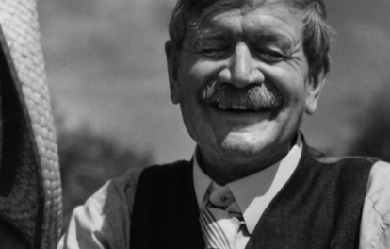
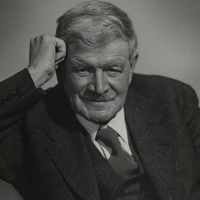
Stephen P. H. Butler Leacock, (30 December 1869 – 28 March 1944) was a Canadian teacher, political scientist, writer, and humorist. Between the years 1915 and 1925, he was the best-known English-speaking humorist in the world. He is known for his light humour along with criticisms of people’s follies. The Stephen Leacock Memorial Medal for Humour was named in his honour. Early life Stephen Leacock was born in Swanmore, a village near Southampton in southern England. He was the third of the eleven children born to (Walter) Peter Leacock (b.1834), who was born and grew up at Oak Hill on the Isle of Wight, an estate that his grandfather had purchased after returning from Madeira where his family had made a fortune out of plantations and Leacock’s Madeira wine, founded in 1760. Stephen’s mother, Agnes, was born at Soberton, the youngest daughter by his second wife (Caroline Linton Palmer) of the Rev. Stephen Butler, of Bury Lodge, the Butler estate that overlooked the village of Hambledon, Hampshire. Stephen Butler (for whom Leacock was named), was the maternal grandson of Admiral James Richard Dacres and a brother of Sir Thomas Dacres Butler, Usher of the Black Rod. Leacock’s mother was the half-sister of Major Thomas Adair Butler, who won the Victoria Cross at the siege and capture of Lucknow. Peter’s father, Thomas Murdock Leacock J.P., had already conceived plans eventually to send his son out to the colonies, but when he discovered that at age eighteen Peter had married Agnes Butler without his permission, almost immediately he shipped them out to South Africa where he had bought them a farm. The farm in South Africa failed and Stephen’s parents returned to Hampshire, where he was born. When Stephen was six, he came out with his family to Canada, where they settled on a farm near the village of Sutton, Ontario, and the shores of Lake Simcoe. Their farm in the township of Georgina in York County was also unsuccessful, and the family was kept afloat by money sent from Leacock’s paternal grandfather. His father became an alcoholic; in the fall of 1878, he travelled west to Manitoba with his brother E.P. Leacock (the subject of Stephen’s book My Remarkable Uncle, published in 1942), leaving behind Agnes and the children. Stephen Leacock, always of obvious intelligence, was sent by his grandfather to the elite private school of Upper Canada College in Toronto, also attended by his older brothers, where he was top of the class and was chosen as head boy. Leacock graduated in 1887, and returned home to find that his father had returned from Manitoba. Soon after, his father left the family again and never returned. There is some disagreement about what happened to Peter Leacock; some suggest that he went to live in Argentina, while other sources indicate that he moved to Nova Scotia and changed his name to Lewis. In 1887, seventeen-year-old Leacock started at University College at the University of Toronto, where he was admitted to the Zeta Psi fraternity. His first year was bankrolled by a small scholarship, but Leacock found he could not return to his studies the following year because of financial difficulties. He left university to work as a teacher—an occupation he disliked immensely—at Strathroy, Uxbridge and finally in Toronto. As a teacher at Upper Canada College, his alma mater, he was able simultaneously to attend classes at the University of Toronto and, in 1891, earn his degree through part-time studies. It was during this period that his first writing was published in The Varsity, a campus newspaper. Academic and political life Disillusioned with teaching, in 1899 he began graduate studies at the University of Chicago under Thorstein Veblen, where he received a doctorate in political science and political economy. He moved from Chicago, Illinois to Montreal, Quebec, where he eventually became the William Dow Professor of Political Economy and long-time chair of the Department of Economics and Political Science at McGill University. He was closely associated with Sir Arthur Currie, former commander of the Canadian Corps in the Great War and principal of McGill from 1919 until his death in 1933. In fact, Currie had been a student observing Leacock’s practice teaching in Strathroy in 1888. In 1936, Leacock was forcibly retired by the McGill Board of Governors—an unlikely prospect had Currie lived. Leacock was both a social conservative and a partisan Conservative. He opposed giving women the right to vote, and had a mixed record on non-Anglo-Saxon immigration, having written both in support of expanding immigration beyond Anglo-Saxons prior to World War II and in opposition to expanding Canadian immigration beyond Anglo Saxons near the close of World War II. He was a staunch champion of the British Empire and the Imperial Federation Movement and went on lecture tours to further the cause. Despite his conservatism, he was a staunch advocate for social welfare legislation and wealth redistribution. Although Prime Minister R.B. Bennett asked him to be a candidate for the 1935 Dominion election, Leacock declined the invitation. Nevertheless, he would stump for local Conservative candidates at his summer home. Literary life Early in his career, Leacock turned to fiction, humour, and short reports to supplement (and ultimately exceed) his regular income. His stories, first published in magazines in Canada and the United States and later in novel form, became extremely popular around the world. It was said in 1911 that more people had heard of Stephen Leacock than had heard of Canada. Also, between the years 1915 and 1925, Leacock was the most popular humorist in the English-speaking world. A humorist particularly admired by Leacock was Robert Benchley from New York. Leacock opened correspondence with Benchley, encouraging him in his work and importuning him to compile his work into a book. Benchley did so in 1922, and acknowledged the nagging from north of the border. Near the end of his life, the American comedian Jack Benny recounted how he had been introduced to Leacock’s writing by Groucho Marx when they were both young vaudeville comedians. Benny acknowledged Leacock’s influence and, fifty years after first reading him, still considered Leacock one of his favorite comic writers. He was puzzled as to why Leacock’s work was no longer well known in the United States. During the summer months, Leacock lived at Old Brewery Bay, his summer estate in Orillia, across Lake Simcoe from where he was raised and also bordering Lake Couchiching. A working farm, Old Brewery Bay is now a museum and National Historic Site of Canada. Gossip provided by the local barber, Jefferson Short, provided Leacock with the material which would become Sunshine Sketches of a Little Town (1912), set in the thinly-disguised Mariposa. Although he wrote learned articles and books related to his field of study, his political theory is now all but forgotten. Leacock was awarded the Royal Society of Canada’s Lorne Pierce Medal in 1937, nominally for his academic work. “The proper punishment for the Hohenzollerns, and the Hapsburgs, and the Mecklenburgs, and the Muckendorfs, and all such puppets and princelings, is that they should be made to work; and not made to work in the glittering and glorious sense, as generals and chiefs of staff, and legislators, and land-barons, but in the plain and humble part of labourers looking for a job. (Leacock 1919: 9)” Memorial Medal for Humour The Stephen Leacock Associates is a foundation chartered to preserve the literary legacy of Stephen Leacock, and oversee the annual award of the Stephen Leacock Memorial Medal for Humour. It is a prestigious honour, given to encourage Canadian humour writing and awarded for the best in Canadian humour writing. The foundation was instituted in 1946 and awarded the first Leacock Medal in 1947. The presentation occurs in June each year at the Stephen Leacock Award Dinner, at the Geneva Park Conference Centre in Orillia, Ontario. Personal life Leacock was born in England in 1869. His father, Peter Leacock, and his mother, Agnes Emma Butler Leacock, were both from well-to-do families. The family, eventually consisting of eleven children, immigrated to Canada in 1876, settling on a one hundred-acre farm in Sutton, Ontario. There Stephen was home-schooled until he was enrolled in Upper Canada College, Toronto. He became the head boy in 1887, and then entered the University of Toronto to study languages and literature. Despite completing two years of study in one year, he was forced to leave the university because his father had abandoned the family. Instead, Leacock enrolled in a three-month course at Strathroy Collegiate Institute to become a qualified high school teacher. His first appointment was at Uxbridge High School, Ontario, but he was soon offered a post at Upper Canada College, where he remained from 1889 through 1899. At this time, he also resumed part-time studies at the University of Toronto, graduating with a B.A. in 1891. However, Leacock’s real interests were turning towards economics and political theory, and in 1899 he was accepted for postgraduate studies at the University of Chicago, where he earned his PhD in 1903 In 1900 Leacock married Beatrix Hamilton, niece of Sir Henry Pellatt, who had built Casa Loma, the largest castle in North America. In 1915, after 15 years of marriage, the couple had their only child, Stephen Lushington Leacock. While Leacock doted on the boy, it soon became apparent that “Stevie” suffered from a lack of growth hormone. Growing to be only four feet tall, he had a love-hate relationship with Leacock, who tended to treat him like a child. Beatrix died in 1925 due to breast cancer. Leacock was offered a post at McGill University, where he remained until he retired in 1936. In 1906, he wrote Elements of Political Science, which remained a standard college textbook for the next twenty years and became his most profitable book. He also began public speaking and lecturing, and he took a year’s leave of absence in 1907 to speak throughout Canada on the subject of national unity. He typically spoke on national unity or the British Empire for the rest of his life. Leacock began submitting articles to the Toronto humor magazine Grip in 1894, and soon was publishing many humorous articles in Canadian and American magazines. In 1910, he privately published the best of these as Literary Lapses. The book was spotted by a British publisher, John Lane, who brought out editions in London and New York, assuring Leacock’s future as a writer. This was confirmed by Literary Lapses (1910), Nonsense Novels (1911) – probably his best books of humorous sketches—and by the more sentimental favorite, Sunshine Sketches of a Little Town (1912). John Lane introduced the young cartoonist Annie Fish to illustrate his 1913 book Behind the Beyond. Leacock’s humorous style was reminiscent of Mark Twain and Charles Dickens at their sunniest—for example in his even and satisfying My Discovery of England (1922). However, his Arcadian Adventures with the Idle Rich (1914) is a darker collection that satirizes city life. Collections of sketches continued to follow almost annually at times, with a mixture of whimsy, parody, nonsense, and satire that was never bitter. Leacock was enormously popular not only in Canada but in the United States and Britain. In later life, Leacock wrote on the art of humor writing and also published biographies of Twain and Dickens. After retirement, a lecture tour to western Canada led to his book My Discovery of the West: A Discussion of East and West in Canada (1937), for which he won the Governor General’s Award. He also won the Mark Twain medal and received a number of honorary doctorates. Other nonfiction books on Canadian topics followed and he began work on an autobiography. Leacock died of throat cancer in Toronto in 1944. A prize for the best humour writing in Canada was named after him, and his house at Orillia on the banks of Lake Couchiching became the Stephen Leacock Museum. Death and tributes Predeceased by Trix (who had died of breast cancer in 1925), Leacock was survived by son Stevie (Stephen Lushington Leacock (1915–1974). In accordance with his wishes, after his death from throat cancer, Leacock was buried in the St George the Martyr Churchyard (St. George’s Church, Sibbald Point), Sutton, Ontario Shortly after his death, Barbara Nimmo, his niece, literary executor and benefactor, published two major posthumous works: Last Leaves (1945) and The Boy I Left Behind Me (1946). His physical legacy was less treasured, and his abandoned summer cottage became derelict. It was rescued from oblivion when it was declared a National Historic Site of Canada in 1958 and ever since has operated as a museum called the Stephen Leacock Museum National Historic Site. In 1947, the Stephen Leacock Award was created to meet the best in Canadian literary humour. In 1969, the centennial of his birth, Canada Post issued a six-cent stamp with his image on it. The following year, the Stephen Leacock Centennial Committee had a plaque erected at his English birthplace and a mountain in the Yukon was named after him. A number of buildings in Canada are named after Leacock, including the Stephen Leacock Building at McGill University, Stephen Leacock Public School in Ottawa, a theatre in Keswick, Ontario, and a school Stephen Leacock Collegiate Institute in Toronto. Screen adaptations Two Leacock short stories have been adapted as National Film Board of Canada animated shorts by Gerald Potterton: My Financial Career and The Awful Fate of Melpomenus Jones. Sunshine Sketches, based on Sunshine Sketches of a Little Town, aired on CBC Television in 1952–1953; it was the first Canadian broadcast of an English-language dramatic series, as it debuted on the first night that television was broadcast in Toronto. In 2012, a screen adaptation based on Sunshine Sketches of a Little Town was aired on CBC Television to celebrate both the 75th anniversary of the CBC and the 100th anniversary of Leacock’s original collection of short stories. The recent screen adaptation featured Gordon Pinsent as a mature Leacock. Bibliography Fiction * Literary Lapses (1910) * Nonsense Novels (1911) * Sunshine Sketches of a Little Town (1912) * Behind the Beyond (1913)– illustrated by Annie Fish. * Arcadian Adventures with the Idle Rich (1914) * Moonbeams from the Larger Lunacy (1915) * Further Foolishness (1916) * Essays and Literary Studies (1916) * Frenzied Fiction (1918) * The Hohenzollerns in America (1919) * Winsome Winnie (1920) * My Discovery of England (1922) * College Days (1923) * Over the Footlights (1923) * The Garden of Folly (1924) * Winnowed Wisdom (1926) * Short Circuits (1928) * The Iron Man and the Tin Woman (1929) * Laugh With Leacock (1930) * The Dry Pickwick (1932) * Afternoons in Utopia (1932) * Hellements of Hickonomics in Hiccoughs of Verse Done in Our Social Planning Mill (1936) * Model Memoirs (1938) * Too Much College (1939) * My Remarkable Uncle (1942) * Happy Stories (1943) * How to Write (1943) * Last Leaves (1945) * My Lost Dollar Non-fiction * Elements of Political Science (1906) * Baldwin, Lafontaine, Hincks: Responsible Government (1907) * Practical Political Economy (1910) * Adventurers of the Far North (1914) * The Dawn of Canadian History (1914) * The Mariner of St. Malo: a chronicle of the voyages of Jacques Cartier (1914) * The Unsolved Riddle of Social Justice (1920) * Mackenzie, Baldwin, Lafontaine, Hincks (1926) * Economic Prosperity in the British Empire (1930) * The Economic Prosperity of the British Empire (1931) * Humour: Its Theory and Technique, with Examples and Samples (1935) * The Greatest Pages of American Humor (1936) * Humour and Humanity (1937) * Here Are My Lectures (1937) * My Discovery of the West (1937) * Our British Empire (1940) * Canada: The Foundations of Its Future (1941) * Our Heritage of Liberty (1942) * Montreal: Seaport and City (1942) * Canada and the Sea (1944) * While There Is Time (1945) * My Lost Dollar Biography * Mark Twain (1932) * Charles Dickens: His Life and Work (1933) Autobiography * The Boy I Left Behind Me (1946) Quotations * "Lord Ronald … flung himself upon his horse and rode madly off in all directions."—Nonsense Novels, “Gertrude the Governess”, 1911 * “Professor Leacock has made more people laugh with the written word than any other living author. One may say he is one of the greatest jesters, the greatest humorist of the age.”—A. P. Herbert * “Mr Leacock is as 'bracing’ as the seaside place of John Hassall’s famous poster. His wisdom is always humorous, and his humour is always wise.”—Sunday Times * “He is still inimitable. No one, anywhere in the world, can reduce a thing to ridicule with such few short strokes. He is the Grock of literature.”—Evening Standard * “I detest life-insurance agents: they always argue that I shall some day die, which is not so.” * “Hockey captures the essence of Canadian experience in the New World. In a land so inescapably and inhospitably cold, hockey is the chance of life, and an affirmation that despite the deathly chill of winter we are alive.” References Wikipedia—https://en.wikipedia.org/wiki/Stephen_Leacock
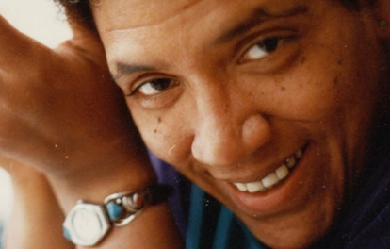
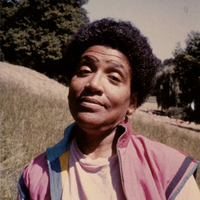
Audre Lorde (/ˈɔːdri lɔːrd/; born Audrey Geraldine Lorde, February 18, 1934– November 17, 1992) was an African American writer, feminist, womanist, lesbian, and civil rights activist. As a poet, she is best known for technical mastery and emotional expression, particularly in her poems expressing anger and outrage at civil and social injustices she observed throughout her life. Her poems and prose largely dealt with issues related to civil rights, feminism, and the exploration of black female identity. In relation to non-intersectional feminism in the United States, Lorde famously said, “Those of us who stand outside the circle of this society’s definition of acceptable women; those of us who have been forged in the crucibles of difference—those of us who are poor, who are lesbians, who are Black, who are older—know that survival is not an academic skill. It is learning how to take our differences and make them strengths. For the master’s tools will never dismantle the master’s house. They may allow us temporarily to beat him at his own game, but they will never enable us to bring about genuine change. And this fact is only threatening to those women who still define the master’s house as their only source of support.” Life and work Lorde was born in New York City to Caribbean immigrants from Barbados and Carriacou, Frederick Byron Lorde (called Byron) and Linda Gertrude Belmar Lorde, who settled in Harlem. Lorde’s mother was of mixed ancestry but could pass for white, a source of pride for her family. Lorde’s father was darker than the Belmar family liked, and they only allowed the couple to marry because of Byron Lorde’s charm, ambition, and persistence. Nearsighted to the point of being legally blind, and the youngest of three daughters (two older sisters, Phyllis and Helen), Audre Lorde grew up hearing her mother’s stories about the West Indies. She learned to talk while she learned to read, at the age of four, and her mother taught her to write at around the same time. She wrote her first poem when she was in eighth grade. Born Audrey Geraldine Lorde, she chose to drop the “y” from her first name while still a child, explaining in Zami: A New Spelling of My Name that she was more interested in the artistic symmetry of the “e”-endings in the two side-by-side names “Audre Lorde” than in spelling her name the way her parents had intended. Lorde’s relationship with her parents was difficult from a young age. She was able to spend very little time with her father and mother, who were busy maintaining their real estate business in the tumultuous economy after the Great Depression, and when she did see them, they were often cold or emotionally distant. In particular, Lorde’s relationship with her mother, who was deeply suspicious of people with darker skin than hers (which Lorde’s was) and the outside world in general, was characterized by “tough love” and strict adherence to family rules. Lorde’s difficult relationship with her mother would figure prominently in later poems, such as Coal’s “Story Books on a Kitchen Table.” As a child, Lorde, who struggled with communication, came to appreciate the power of poetry as a form of expression. She memorized a great deal of poetry, and would use it to communicate, to the extent that, “If asked how she was feeling, Audre would reply by reciting a poem.” Around the age of twelve, she began writing her own poetry and connecting with others at her school who were considered “outcasts” as she felt she was. She attended Hunter College High School, a secondary school for intellectually gifted students, and graduated in 1951. In 1954, she spent a pivotal year as a student at the National University of Mexico, a period she described as a time of affirmation and renewal, during which she confirmed her identity on personal and artistic levels as a lesbian and poet. On her return to New York, she attended Hunter College, graduating class of 1959. There, she worked as a librarian, continued writing and became an active participant in the gay culture of Greenwich Village. She furthered her education at Columbia University, earning a master’s degree in Library Science in 1961. She also worked during this time as a librarian at Mount Vernon Public Library and married attorney Edwin Rollins; they divorced in 1970 after having two children, Elizabeth and Jonathan. In 1966, Lorde became head librarian at Town School Library in New York City, where she remained until 1968. In 1968 Lorde was writer-in-residence at Tougaloo College in Mississippi, where she met Frances Clayton, a white professor of psychology, who was to be her romantic partner until 1989. Lorde’s time at Tougaloo College, like her year at the National University of Mexico, was a formative experience for Lorde as an artist. She led workshops with her young, black undergraduate students, many of whom were eager to discuss the civil rights issues of that time. Through her interactions with her students, she reaffirmed her desire not only to live out her “crazy and queer” identity, but devoted new attention to the formal aspects of her craft as a poet. Her book of poems Cables to Rage came out of her time and experiences at Tougaloo. From 1977 to 1978 Lorde had a brief affair with the sculptor and painter Mildred Thompson. The two met in Nigeria in 1977 at the Second World Black and African Festival of Arts and Culture (FESTAC 77). Their affair ran its course during the time that Thompson lived in Washington, D.C. The Berlin Years In 1984 Audre Lorde started a visiting professorship in Berlin Germany at the Free University of Berlin. She was invited by Dagmar Schultz who met her at the UN “World Women’s Conference” in Copenhagen in 1980. While Lorde was in Germany she made a significant impact on the women there and was a big part of the start of the Afro-German movement. The term Afro-German was created by Lorde and some Black German women as a nod to African-American. During her many trips to Germany, she touched many women’s lives including May Ayim, Ika Hugel-Marshell, and Hegal Emde. All of these women decided to start writing after they met Audre Lorde. She encouraged the women of Germany to speak up and have a voice. Instead of fighting through violence, Lorde thought that language was a powerful form of resistance. Her impact on Germany reached more than just Afro-German women. Many white women and men found Lorde’s work to be very beneficial to their own lives. They started to put their privilege and power into question and became more conscious. Because of her impact on the Afro-German movement, Dagmar Schultz put together a documentary to highlight the chapter of her life that was not known to many. Audre Lorde - The Berlin Years was accepted by the Berlinale in 2012 and from then was showed at many different film festivals around the world and received five awards. The film showed the lack of recognition that Lorde received for her contributions towards the theories of intersectionality. Last years Audre Lorde battled cancer for fourteen years. She was first diagnosed with breast cancer in 1978 and underwent a mastectomy. Six years later, she was diagnosed with liver cancer. After her diagnosis, she chose to become more focused on both her life and her writing. She wrote The Cancer Journals, which won the American Library Association Gay Caucus Book of the Year Award in 1981. She featured as the subject of a documentary called A Litany for Survival: The Life and Work of Audre Lorde, which shows her as an author, poet, human rights activist, feminist, lesbian, a teacher, a survivor, and a crusader against bigotry. She is quoted in the film as saying: “What I leave behind has a life of its own. I’ve said this about poetry; I’ve said it about children. Well, in a sense I’m saying it about the very artifact of who I have been.” From 1991 until her death, she was the New York State Poet Laureate. In 1992, she received the Bill Whitehead Award for Lifetime Achievement from Publishing Triangle. In 2001, Publishing Triangle instituted the Audre Lorde Award to honour works of lesbian poetry. Lorde died of liver cancer on November 17, 1992, in St. Croix, where she had been living with Gloria I. Joseph. She was 58. In an African naming ceremony before her death, she took the name Gamba Adisa, which means “Warrior: She Who Makes Her Meaning Known”. Work Poetry Lorde focused her discussion of difference not only on differences between groups of women but between conflicting differences within the individual. “I am defined as other in every group I’m part of,” she declared. “The outsider, both strength and weakness. Yet without community there is certainly no liberation, no future, only the most vulnerable and temporary armistice between me and my oppression”. She described herself both as a part of a “continuum of women” and a “concert of voices” within herself. Her conception of her many layers of selfhood is replicated in the multi-genres of her work. Critic Carmen Birkle wrote: “Her multicultural self is thus reflected in a multicultural text, in multi-genres, in which the individual cultures are no longer separate and autonomous entities but melt into a larger whole without losing their individual importance.” Her refusal to be placed in a particular category, whether social or literary, was characteristic of her determination to come across as an individual rather than a stereotype. Lorde considered herself a “lesbian, mother, warrior, poet” and used poetry to get this message across. Lorde’s poetry was published very regularly during the 1960s—in Langston Hughes’ 1962 New Negro Poets, USA; in several foreign anthologies; and in black literary magazines. During this time, she was also politically active in civil rights, anti-war, and feminist movements. In 1968, Lorde published The First Cities, her first volume of poems. It was edited by Diane di Prima, a former classmate and friend from Hunter College High School. The First Cities has been described as a “quiet, introspective book,” and Dudley Randall, a poet and critic, asserted in his review of the book that Lorde “does not wave a black flag, but her blackness is there, implicit, in the bone”. Her second volume, Cables to Rage (1970), which was mainly written during her tenure as poet-in-residence at Tougaloo College in Mississippi, addressed themes of love, betrayal, childbirth, and the complexities of raising children. It is particularly noteworthy for the poem “Martha,” in which Lorde openly confirms her homosexuality for the first time in her writing: "[W]e shall love each other here if ever at all.” Nominated for the National Book Award for poetry in 1973, From a Land Where Other People Live (Broadside Press) shows Lorde’s personal struggles with identity and anger at social injustice. The volume deals with themes of anger, loneliness, and injustice, as well as what it means to be an African-American woman, mother, friend, and lover. 1974 saw the release of New York Head Shop and Museum, which gives a picture of Lorde’s New York through the lenses of both the civil rights movement and her own restricted childhood: stricken with poverty and neglect and, in Lorde’s opinion, in need of political action. Despite the success of these volumes, it was the release of Coal in 1976 that established Lorde as an influential voice in the Black Arts Movement (Norton), as well as introducing her to a wider audience. The volume includes poems from both The First Cities and Cables to Rage, and it unties many of the themes Lorde would become known for throughout her career: her rage at racial injustice, her celebration of her black identity, and her call for an intersectional consideration of women’s experiences. Lorde followed Coal up with Between Our Selves (also in 1976) and Hanging Fire (1978). In Lorde’s volume The Black Unicorn (1978), she describes her identity within the mythos of African female deities of creation, fertility, and warrior strength. This reclamation of African female identity both builds and challenges existing Black Arts ideas about pan-Africanism. While writers like Amiri Baraka and Ishmael Reed utilized African cosmology in a way that “furnished a repertoire of bold male gods capable of forging and defending an aboriginal black universe,” in Lorde’s writing “that warrior ethos is transferred to a female vanguard capable equally of force and fertility.” Lorde’s poetry became more open and personal as she grew older and became more confident in her sexuality. In Sister Outsider: Essays and Speeches, Lorde states, "Poetry is the way we help give name to the nameless so it can be thought…As they become known to and accepted by us, our feelings and the honest exploration of them become sanctuaries and spawning grounds for the most radical and daring ideas." Sister Outsider also elaborates Lorde’s challenge to European-American traditions. Prose The Cancer Journals (1980), derived in part from personal journals written in the late seventies, and A Burst of Light (1988) both use non-fiction prose to preserve, explore, and reflect on Lorde’s diagnosis, treatment, and recovery from breast cancer. In both works, Lorde deals with Western notions of illness, treatment, and physical beauty and prosthesis, as well as themes of death, fear of mortality, victimization versus survival, and inner power. Lorde’s deeply personal novel Zami: A New Spelling of My Name (1982), described as a “biomythography,” chronicles her childhood and adulthood. The narrative deals with the evolution of Lorde’s sexuality and self-awareness. In Sister Outsider: Essays and Speeches (1984), Lorde asserts the necessity of communicating the experience of marginalized groups in order to make their struggles visible in a repressive society. She emphasizes the need for different groups of people (particularly white women and African-American women) to find common ground in their lived experience. One of her works in Sister Outsider: Essays and Speeches is “The Master’s Tools Will Never Dismantle the Master’s House.” Lorde questions the scope and ability for change to be instigated when examining problems through a racist, patriarchal lens. She insists that women see differences between other women not as something to be tolerated, but something that is necessary to generate power and to actively “be” in the world. This will create a community that embraces differences, which will ultimately lead to liberation. Lorde elucidates, “Divide and conquer, in our world, must become define and empower." Also, one must educate themselves about the oppression of others because expecting a marginalized group to educate the oppressors is the continuation of racist, patriarchal thought. She explains that this is a major tool utilized by oppressors to keep the oppressed occupied with the master’s concerns. She concludes that in order to bring about real change, we cannot work within the racist, patriarchal framework because change brought about in that will not remain. Another work in Sister Outsider: Essays and Speeches is “The Transformation of Silence into Language and Action.*” Lorde discusses the importance of speaking, even when afraid because one’s silence will not protect them from being marginalized and oppressed. Many people fear to speak the truth because of how it may cause pain, however, one ought to put fear into perspective when deliberating whether to speak or not. Lorde emphasizes that “the transformation of silence into language and action is a self-revelation, and that always seems fraught with danger." People are afraid of others’ reactions for speaking, but mostly for demanding visibility, which is essential to live. Lorde adds, “We can sit in our corners mute forever while our sisters and ourselves are wasted, while our children are distorted and destroyed, while our earth is poisoned; we can sit in our safe corners mute as bottles, and we will still be no less afraid." People are taught to respect their fear of speaking more than silence, but ultimately, the silence will choke us anyway, so we might as well speak the truth. In 1980, together with Barbara Smith and Cherríe Moraga, she co-founded Kitchen Table: Women of Color Press, the first U.S. publisher for women of color. Lorde was State Poet of New York from 1991 to 1992. Theory Her writings are based on the “theory of difference,” the idea that the binary opposition between men and women is overly simplistic; although feminists have found it necessary to present the illusion of a solid, unified whole, the category of women itself is full of subdivisions. Lorde identified issues of class, race, age, gender, and even health– this last was added as she battled cancer in her later years– as being fundamental to the female experience. She argued that, although differences in gender have received all the focus, it is essential that these other differences are also recognized and addressed. “Lorde,” writes the critic Carmen Birkle, “puts her emphasis on the authenticity of experience. She wants her difference acknowledged but not judged; she does not want to be subsumed into the one general category of ‘woman.’” This theory is today known as intersectionality. While acknowledging that the differences between women are wide and varied, most of Lorde’s works are concerned with two subsets that concerned her primarily—race and sexuality. In Ada Gay Griffin and Michelle Parkerson’s documentary A Litany for Survival: The Life and Work of Audre Lorde, Lorde says, "Let me tell you first about what it was like being a Black woman poet in the ‘60s, from jump. It meant being invisible. It meant being really invisible. It meant being doubly invisible as a Black feminist woman and it meant being triply invisible as a Black lesbian and feminist". In her essay “The Erotic as Power,” written in 1978 and collected in Sister Outsider, Lorde theorizes the Erotic as a site of power for women only when they learn to release it from its suppression and embrace it. She proposes that the Erotic needs to be explored and experienced wholeheartedly, because it exists not only in reference to sexuality and the sexual, but also as a feeling of enjoyment, love, and thrill that is felt towards any task or experience that satisfies women in their lives, be it reading a book or loving one’s job. She dismisses “the false belief that only by the suppression of the erotic within our lives and consciousness can women be truly strong. But that strength is illusory, for it is fashioned within the context of male models of power.” She explains how patriarchal society has misnamed it used it against women, causing women to fear it. Women also fear it because the erotic is powerful and a deep feeling. Women must share each others’ power rather than use it without consent, which is abuse. They should do it as a method to connect everyone in their differences and similarities. Utilizing, the erotic as power allows women to use their knowledge and power to face the issues of racism, patriarchy, and our anti-erotic society. Contemporary feminist thought Lorde set out to confront issues of racism in feminist thought. She maintained that a great deal of the scholarship of white feminists served to augment the oppression of black women, a conviction that led to angry confrontation, most notably in a blunt open letter addressed to the fellow radical lesbian feminist Mary Daly, to which Lorde claimed she received no reply. Daly’s reply letter to Lorde, dated 4½ months later, was found in 2003 in Lorde’s files after she died. This fervent disagreement with notable white feminists furthered Lorde’s persona as an outsider: "In the institutional milieu of black feminist and black lesbian feminist scholars [...] and within the context of conferences sponsored by white feminist academics, Lorde stood out as an angry, accusatory, isolated black feminist lesbian voice". The criticism was not one-sided: many white feminists were angered by Lorde’s brand of feminism. In her 1984 essay “The Master’s Tools Will Never Dismantle the Master’s House,” Lorde attacked underlying racism within feminism, describing it as unrecognized dependence on the patriarchy. She argued that, by denying difference in the category of women, white feminists merely furthered old systems of oppression and that, in so doing, they were preventing any real, lasting change. Her argument aligned white feminists who did not recognize race as a feminist issue with white male slave-masters, describing both as “agents of oppression.” Lorde’s comments on feminism In Audre Lorde’s “Age, Race, Class, and Sex: Women Redefining Difference,” she writes: “Certainly there are very real differences between us of race, age, and sex. But it is not those differences between us that are separating us. It is rather our refusal to recognize those differences, and to examine the distortions which result from our misnaming them and their effects upon human behavior and expectation.” More specifically she states: “As white women ignore their built-in privilege of whiteness and define woman in terms of their own experience alone, then women of color become ‘other’.” Self-identified as “a forty-nine-year-old Black lesbian feminist socialist mother of two,” Lorde is considered as “other, deviant, inferior, or just plain wrong” in the eyes of the normative “white male heterosexual capitalist” social hierarchy. “We speak not of human difference, but of human deviance,” she writes. In this respect, Lorde’s ideology coincides with womanism, which “allows black women to affirm and celebrate their color and culture in a way that feminism does not.” Influences on Black Feminism Lorde’s work on black feminism continues to be examined by scholars today. Jennifer C. Nash examines how black feminists acknowledge their identities and find love for themselves through those differences. Nash cites Lorde, who writes, “I urge each one of us here to reach down into that deep place of knowledge inside herself and touch that terror and loathing of any difference that lives there. See whose face it wears. Then the personal as the political can begin to illuminate all our choices." Nash explains that Lorde is urging black feminists to embrace politics rather than fear it, which will lead to an improvement in society for them. Lorde adds, “Black women sharing close ties with each other, politically or emotionally, are not the enemies of Black men. Too frequently, however, some Black men attempt to rule by fear those Black women who are more ally than enemy.” Lorde insists that the fight between black women and men must end in order to end racist politics. Personal Identity Throughout Lorde’s career she included the idea of a collective identity in many of her poems and books. Audre Lorde did not just identify with one category but she wanted to celebrate all parts of herself equally. She was known to describe herself as African-American, black, feminist, poet, mother, etc. In her novel Zami: A New Spelling of My Name Lorde focuses on how her many different identities shape her life and the different experiences she has because of them. She shows us that personal identity is found within the connections between seemingly different parts of life. Personal identity is often associated with the visual aspect of a person, but as Lies Xhonneux theorizes when identity is singled down to just to what you see, some people, even within minority groups, can become invisible. In her late book The Cancer Journals she said “If I didn’t define myself for myself, I would be crunched into other people’s fantasies for me and eaten alive.” This is important because an identity is more than just what people see or think of a person, it is something that must be defined by the individual. “The House of Difference” is a phrase that has stuck with Lorde’s identity theories. Her idea was that everyone is different from each other and it is the collective differences that make us who we are, instead of one little thing. Focusing on all of the aspects of identity brings people together more than choosing one piece of an identity. Audre Lorde and womanism Audre Lorde’s criticism of feminists of the 1960s identified issues of race, class, age, gender and sexuality. Similarly, author and poet Alice Walker coined the term “womanist” in an attempt to distinguish black female and minority female experience from “feminism”. While “feminism” is defined as “a collection of movements and ideologies that share a common goal: to define, establish, and achieve equal political, economic, cultural, personal, and social rights for women” by imposing simplistic opposition between “men” and “women,” the theorists and activists of the 1960s and 1970s usually neglected the experiential difference caused by factors such as race and gender among different social groups. Womanism and its ambiguity Womanism’s existence naturally opens various definitions and interpretations. Alice Walker’s comments on womanism, that “womanist is to feminist as purple is to lavender,” suggests that the scope of study of womanism includes and exceeds that of feminism. In its narrowest definition, womanism is the black feminist movement that was formed in response to the growth of racial stereotypes in the feminist movement. In a broad sense, however, womanism is “a social change perspective based upon the everyday problems and experiences of black women and other women of minority demographics,” but also one that “more broadly seeks methods to eradicate inequalities not just for black women, but for all people” by imposing socialist ideology and equality. However, because womanism is open to interpretation, one of the most common criticisms of womanism is its lack of a unified set of tenets. It is also criticized for its lack of discussion of sexuality. Lorde actively strived for the change of culture within the feminist community by implementing womanist ideology. In the journal "Anger Among Allies: Audre Lorde’s 1981 Keynote Admonishing the National Women’s Studies Association," it is stated that Lorde’s speech contributed to communication with scholars’ understanding of human biases. While “anger, marginalized communities, and US Culture” are the major themes of the speech, Lorde implemented various communication techniques to shift subjectivities of the “white feminist” audience. Lorde further explained that “we are working in a context of oppression and threat, the cause of which is certainly not the angers which lie between us, but rather that virulent hatred leveled against all women, people of color, lesbians and gay men, poor people—against all of us who are seeking to examine the particulars of our lives as we resist our oppressions, moving towards coalition and effective action.” Audre Lorde and critique of womanism A major critique of womanism is its failure to explicitly address homosexuality within the female community. Very little womanist literature relates to lesbian or bisexual issues, and many scholars consider the reluctance to accept homosexuality accountable to the gender simplistic model of womanism. According to Lorde’s essay “Age, Race, Class, and Sex: Women Redefining Difference,” “the need for unity is often misnamed as a need for homogeneity.” She writes, “A fear of lesbians, or of being accused of being a lesbian, has led many Black women into testifying against themselves.” Contrary to this, Audre Lorde was very open to her own sexuality and sexual awakening. In Zami: A New Spelling of My Name, her famous “biomythography” (a term coined by Lorde that combines “biography” and “mythology”) she writes, “Years afterward when I was grown, whenever I thought about the way I smelled that day, I would have a fantasy of my mother, her hands wiped dry from the washing, and her apron untied and laid neatly away, looking down upon me lying on the couch, and then slowly, thoroughly, our touching and caressing each other’s most secret places.” According to scholar Anh Hua, Lorde turns female abjection—menstruation, female sexuality, and female incest with the mother—into powerful scenes of female relationship and connection, thus subverting patriarchal heterosexist culture. With such a strong ideology and open-mindedness, Lorde’s impact on lesbian society is also significant. An attendee of a 1978 reading of Lorde’s essay “Uses for the Erotic: the Erotic as Power” says: “She asked if all the lesbians in the room would please stand. Almost the entire audience rose.” Tributes The Callen-Lorde Community Health Center is an organization in New York City named for Michael Callen and Audre Lorde, which is dedicated to providing medical health care to the city’s LGBT population without regard to ability to pay. Callen-Lorde is the only primary care center in New York City created specifically to serve the LGBT community. The Audre Lorde Project, founded in 1994, is a Brooklyn-based organization for queer people of color. The organization concentrates on community organizing and radical nonviolent activism around progressive issues within New York City, especially relating to queer and transgender communities, AIDS and HIV activism, pro-immigrant activism, prison reform, and organizing among youth of color. The Audre Lorde Award is an annual literary award presented by Publishing Triangle to honor works of lesbian poetry, first presented in 2001. In 2014 Lorde was inducted into the Legacy Walk, an outdoor public display in Chicago, Illinois that celebrates LGBT history and people.
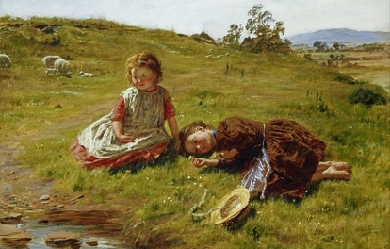
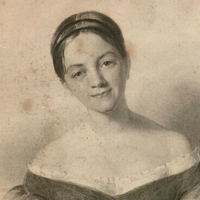
Letitia Elizabeth Landon (14 August 1802– 15 October 1838), English poet and novelist, better known by her initials L. E. L. Early life Letitia Elizabeth Landon was born on 14 August 1802 in Chelsea, London to John Landon and Catherine Jane, née Bishop. A precocious child, Landon learned to read as a toddler; an invalid neighbour would scatter letter tiles on the floor and reward young Letitia for reading, and, according to her father, “she used to bring home many rewards.” At the age of five, Landon began attending Mrs Rowden’s school at 22 Hans Place, which counted among its alumnae Mary Russell Mitford and Lady Caroline Lamb. The family moved to the country in 1809, so that John Landon could carry out a model farm project, and Landon was educated at home by her cousin Elizabeth from that point on. Elizabeth, though older, soon found her knowledge and abilities outstripped by those of her pupil: “When I asked Letitia any question relating either to history, geography, grammar - Plutarch’s Lives, or to any book we had been reading, I was pretty certain her answers would be perfectly correct; still, not exactly recollecting, and unwilling she should find out just then that I was less learned than herself, I used thus to question her: ‘Are you quite certain?’... I never knew her to be wrong.” When young, Letitia was very close to her younger brother, Whittington Henry, born 1804. Paying for Whittington through university (Worcester Colloege, Oxford) was one of the needs that drove Letitia to publish. She also supported his preferment and later dedicated her poem ‘Captain Cook’ to their childhood days together. Whittington went on to become a minister and published a book of Sermons in 1835. Sadly, he did not show any appreciation for all his sister’s financial assistance but spread false rumours about her marriage and death. Letitia also had a little sister, Elizabeth Jane (1806), who was a frail child and died in 1819, aged just 13. Little is known of Elizabeth but her death may well have left a profound impression on Letitia and it could be Elizabeth who is referred to in the poem ‘The Forgotten One’. Appearance and character The following statements from those who knew her give some idea of the woman known as L. E. L. Emma Roberts, from her introduction to “The Zenana and other works”: L.E.L. could not be, strictly speaking, called handsome ; her eyes being the only good feature in a countenance, which was, however, so animated, and lighted up with such intellectual expression, as to be exceedingly attractive. Gay and piquant, her clear complexion, dark hair, and eyes, rendered her, when in health and spirits, a sparkling brunette. The prettiness of L.E.L., though generally acknowledged, was not talked about ; and many persons, on their first introduction, were as pleasingly surprised as the Ettrick Shepherd, who, gazing upon her with great admiration, exclaimed “ I did na think ye had been sae bonny.” Her figure was slight, and beautifully proportioned, with little hands and feet ; and these personal advantages, added to her kind and endearing manners, rendered her exceedingly fascinating. William Jerdan, from his autobiography: In truth, she was the most unselfish of human creatures; and it was quite extraordinary to witness her ceaseless consideration for the feelings of others, even in minute trifles, whilst her own mind was probably troubled and oppressed; a sweet disposition, so perfectly amiable, from Nature’s fount, and so unalterable in its manifestations throughout her entire life, that every one who enjoyed her society loved her, and servants, companions, intimates, friends, all united in esteem and affection for the gentle and self-sacrificing being who never exhibited a single trait of egotism, presumption, or unkindliness! Mrs S.C. Hall from The Atlantic Monthly: Perhaps the greatest magic she exercised was, that, after the first rush of remembrance of all that wonderful young woman had written had subsided, she rendered you completely oblivious of what she had done by the irresistible charm of what she was. You forgot all about her books,—you only felt the intense delight of life with her ; she was penetrating and sympathetic, and entered into your feelings so entirely that you wondered how 'the little witch’ could read you so readily and so rightly,—and if, now and then, you were startled, perhaps dismayed, by her wit, it was but the prick of a diamond arrow. Words and thoughts that she flung hither and thither, without design or intent beyond the amusement of the moment, come to me still with a mingled thrill of pleasure and pain that I cannot describe, and that my most friendly readers, not having known her, could not understand. Mrs A.K.C. Elwood from her Memoirs of Literary Ladies: It was her invariable habit to write in her bed-room,—"a homely-looking, almost uncomfortable room, fronting the street, and barely furnished—with a simple white bed, at the foot of which was a small, old, oblong-shaped sort of dressing-table, quite covered with a common worn writing-desk, heaped with papers, while some strewed the ground, the table being too small for aught besides the desk. A little high-backed cane chair, which gave you any idea but that of comfort, and a few books scattered about, completed the author’s paraphernalia.” Emma Roberts again: She not only read, but thoroughly understood, and entered into the merits of every book that came out ; while it is merely necessary to refer to her printed works, to calculate the amount of information which she had gathered from preceding authors. The history and literature of all ages and all countries were familiar to her ; nor did she acquire any portion of her knowledge in a superficial manner ; the extent of her learning, and the depth of her research, manifesting themselves in publications which do not bear her name ; her claim to them being only known to friends, who, like myself, had access to her desk, and with whom she knew the secret might be safely trusted. One aspect that is common to all accounts of those who knew Miss Landon is that she possessed an exceptionally high level of intelligence. Fredric Rowton in his 'The Female Poets of Great Britain’ puts it thus: Of Mrs. Maclean’s genius there can be but one opinion. It is distinguished by very great intellectual power, a highly sensitive and ardent imagination, an intense fervour of passionate emotion, and almost unequalled eloquence and fluency. Of mere art she displays but little. Her style is irregular and careless, and her painting sketchy and rough: but there is genius in every line she has written. (Like many others, Rowton is deceived by the artistry of Landon’s projection of herself as the improvisatrice, L. E. L. As Glennis Stevenson writes, few poets have been as artificial as Landon in her 'gushing stream of Song’. She cites the usage of repetition, mirroring and the embedding of texts amongst the techniques that account for the characteristic intensity of Landon’s poetry.) Literary career An agricultural depression soon followed, and the family moved back to London in 1815, where John Landon made the acquaintance of William Jerdan, editor of the Literary Gazette. According to 19th-century commentator Mrs A. T. Thomson, Jerdan took notice of the young Landon when he saw her coming down the street, “trundling a hoop with one hand, and holding in the other a book of poems, of which she was catching a glimpse between the agitating course of her evolutions.” Jerdan encouraged Landon’s poetic endeavors, and her first poem was published under the single initial “L” in the Gazette in 1820, when Landon was 18. The following year, with financial support from her grandmother, Landon published a book of poetry, The Fate of Adelaide, under her full name. The book met with little critical notice but sold well; Landon, however, never received any profits, as the publisher went out of business shortly thereafter. The same month that The Fate of Adelaide appeared, Landon published two poems under the initials “L.E.L.” in Gazette; these poems, and the initials under which they were published, attracted much discussion and speculation. As contemporary critic Laman Blanchard put it, the initials L.E.L. “speedily became a signature of magical interest and curiousity.” Bulwer Lytton wrote that, as a young college student, he and his classmates would rush every Saturday afternoon for the ‘Literary Gazette,’ [with] an impatient anxiety to hasten at once to that corner of the sheet which contained the three magical letters L.E.L. And all of us praised the verse, and all of us guessed at the author. We soon learned it was a female, and our admiration was doubled, and our conjectures tripled.” Landon served as the Gazette’s chief reviewer as she continued to write poetry; her second collection, The Improvisatrice, appeared in 1824. Landon’s father died later that year, and Landon was forced to use her writing to support both herself and her family; Contemporaries saw this profit-motive as detrimental to the quality of Landon’s work. Mary Mitford claimed that the novels of Catherine Stepney were honed and polished by Landon. By 1826, Landon’s high reputation began to suffer as rumours circulated that she had had affairs or secretly borne children. (In 2000, scholar Cynthia Lawford published an article in the London Review of Books citing birth records implying that Landon had in fact borne children in the 1820s from a secret affair with Jerdan.) Details of Letitia’s children by William (Ella, Fred and Laura) and their descendants can be found in Susan Matoff Landon continued, however, to publish poetry, and in 1831 she published her first novel, Romance and Reality. She became engaged to John Forster. Forster became aware of the rumours regarding Landon’s sexual activity, and asked her to refute them. Landon responded that Forster should "make every inquiry in [his] power," which Forster did; after he pronounced himself satisfied of Landon’s purity, however, Landon broke off their engagement. To him, she wrote: The more I think, the more I feel I ought not– I can not– allow you to unite yourself with one accused of - I can not write it. The mere suspicion is dreadful as death. Were it stated as a fact, that might be disproved. Were it a difficulty of any other kind, I might say, Look back at every action of my life, ask every friend I have. But what answer can I give ...? I feel that to give up all idea of a near and dear connection is as much my duty to myself as to you... Privately, however, Landon stated that she would never marry a man who had mistrusted her. In a letter to Bulwer Lytton, she wrote that “if his future protection is to harass and humiliate me as much as his present - God keep me from it... I cannot get over the entire want of delicacy to me which could repeat such slander to myself.” After this, Landon began to "[talk] of marrying any one, and of wishing to get away, from England, and from those who had thus misunderstood her." In October 1836, Landon met George Maclean, governor of the Gold Coast (now Ghana), at a dinner party, and the two began a relationship. Maclean, however, moved to Scotland early the following year, to the surprise and distress of Landon and her friends. After much prodding, Maclean returned to England and he and Landon were married shortly thereafter, on 7 June 1838. The marriage was kept secret, and Landon spent the first month of it living with friends. Emma Roberts writes of Mr Maclean: “No one could better appreciate than L.E.L. the high and sterling qualities of her lover’s character, his philanthropic and unceasing endeavours to improve the condition of the natives of Africa ; the noble manner in which he interfered to prevent the horrid waste of human life by the barbarian princes in his neighbourhood ; and the chivalric energy with which he strove to put an end to the slave-trade. L.E.L. esteemed Mr. Maclean the more, in consequence of his not approaching her with the adulation with which her ear had been accustomed, to satiety ; she was gratified by the manly nature of his attachment. Possessing, in her estimation, merits of the highest order, the influence which he gained over her promised, in the opinion of those who were best acquainted with the docility of her temper, and her ready acquiescence with the wishes of those she loved, to ensure lasting happiness.” In early July, the couple sailed for Cape Coast, where they arrived on 16 August. Two months later, on 15 October, Landon was found dead, a bottle of prussic acid in her hand. However, that she was poisoned thereby was a gross assumption. There is ample evidence that she showed symptoms of Stokes-Adams syndrome for which the dilute acid was taken as a remedy. No autopsy was carried out and from the eye-witness accounts it seems, in retrospect, almost certain that Mrs McLean suffered a fatal convulsion. Her death was therefore from natural causes, causes that were independent of her location. In addition to the works listed below, Miss Landon is known to be responsible for innumerable anonymous reviews and other articles whose authorship is unlikely ever now to be established (compare Emma Roberts above). She also assumed the occasional pseudonym: for one, she adopted the name Iole for a period through 1826. One of her Iole poems, The Frozen Ship, was later included in the collection, The Vow of the Peacock. Among the poets of her time to recognise and admire her were Elizabeth Barrett Browning, who wrote “L.E.L.'s Last Question” in homage, and Christina Rossetti, who published a tribute poem entitled “L.E.L” in her 1866 volume “The Prince’s Progress and Other Poems.” Reputation Her reputation, while high in the 19th century, fell during most of the 20th as literary fashions changed and Landon’s poetry was perceived as overly simple and sentimental. In recent years, however, scholars and critics have increasingly studied her work, beginning with Germaine Greer in the 1970s. Critics such as Isobel Armstrong argue that the supposed simplicity of poetry such as Landon’s is deceptive, and that women poets of the 19th century often employed a method of writing which allows for multiple, concurrent levels of meaning. Moreover, 20th century opinions were perhaps influenced by the almost completely inaccurate picture of the poet and her life that built up following her death. It was not considered that the very bases for such criticism had already been systematically and effectively demolished by Sarah Sheppard in her “Characteristics of the Genius and Writings of L E L” of 1841. Any assessment should not forget the factors that brought Landon to pre-eminence: the originality of her ideas and the sheer beauty of her poetry in all its many diverse forms. Those ideas engendered a whole new school of poetry (the 'Landon School’), which spread not only in England but also in America.
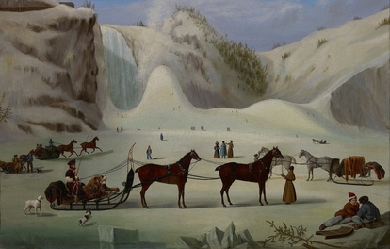
Rosanna Eleanor Leprohon (January 12, 1829– September 20, 1879), born Rosanna Eleanor Mullins, was a Canadian writer and poet. She was “one of the first English-Canadian writers to depict French Canada in a way that earned the praise of, and resulted in her novels being read by, both anglophone and francophone Canadians.”

I was born in Crescent City, California, but was not there for long. I moved to Libby, Montana when I was only two, and lived there for the next 7 years of my life. I loved Libby, knew the streets as well as any 8 or 9 year old could, so as expected, I cried when my family of six moved to the small town of Troy just 18 miles away. Slowly I learned to love Troy just as much, and soon had friends and was even enjoying my time in my new school! One very short year of fun and laughter went by and we were moving again. I spent a month up in Eureka with my sister and two brothers, while our mom went off to the city of Bozeman, Montana, almost 400 miles south to visit family. My other two siblings moved back to Spokane to be with their father, and my sister decided to stay in Eureka when we moved. The rest of us happily lived and camped in the foothills of the Hyalite Canyon in Bozeman for the next two summer months. My mom would take my two brothers and I to the "Bozeman Beach" almost every day she wasn't working, and we would play in the sand and swim in the pond and have the time of our lives. One day, I saw an alligator made of sand, and wanted to make one myself, so I asked the man who had made it to help me. He and my mom got to talking and he invited us all over to dinner. When he learned of our situation, he offered to share his home with us! we now had a real roof over our heads. My sister eventually moved down to Bozeman with us, but the other two decided to stay in Washington. There was a normal life then, filled with school, friends, pets, singing and dancing, heartbreaks and love, happiness, and most importantly, family. My incredible mom has made this house a home, and openly welcomes us to come and go, all the while holding us together with her love and devotion to us. My very first poem was written for her, and though it is lost to time, I have been writing poetry ever since.
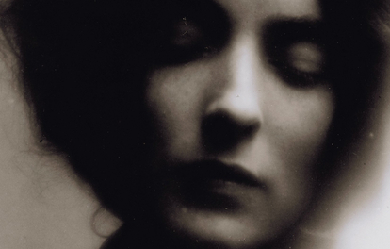
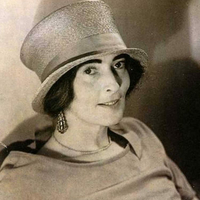
Mina Loy (born Mina Gertrude Löwy; 27 December 1882 – 25 September 1966), was a British artist, writer, poetess, playwright, novelist, futurist, feminist, designer of lamps, and bohemian. She was one of the last of the first generation modernists to achieve posthumous recognition. Loy was born in London. She was the daughter of a Hungarian Jewish father and an English Protestant mother. Loy’s first hobby was art. She studied painting in Munich at St. John’s Wood School in 1897 for two years.

I grew up in the middle of a cornfield in Nebraska. My mother, born in 1950, and my father, born in 1924, raised me well. I had a great childhood, but my father dying when I was 13 had a large impact on me. I went down a rough road being a state ward, messing around with drugs and alcohol, and living life on the run. Through everything, however, I never stopped writing. Sure, I'd go through dry spells like we all do, but I've never given up. I write short stories, and poetry. I have a very abstract view on life, sometimes. My poems don't always make sense. But that's why I love to write; it doesn't always need to make sense to taste good on your tongue and feel right rolling across your lips. I was published by The American Poets Society in the Book Expressions at age 13 if any of you care to try to look me up. My piece was simply titled, 'Daddy'
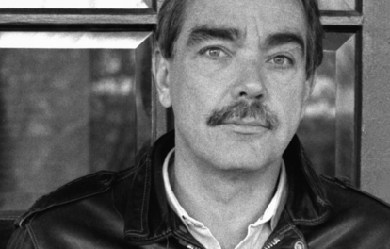
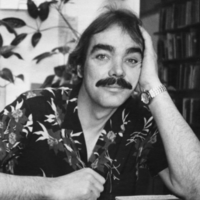
Larry Patrick Levis (September 30, 1946– May 8, 1996) was an American poet. Youth and education Larry Levis was born the son of a grape grower; he grew up driving a tractor, picking grapes, and pruning vines of Selma, California, a small fruit-growing town in the San Joaquin Valley. He later wrote of the farm, the vineyards, and the Mexican migrant workers that he worked alongside. He also remembered hanging out in the local billiards parlor on Selma’s East Front Street, across from the Southern Pacific Railroad tracks. Levis earned a bachelor’s degree from Fresno State College in 1968, a master’s degree from Syracuse University in 1970, and a Ph.D. from the University of Iowa in 1974. Awards and recognition Levis won the United States Award from the International Poetry Forum for his first book of poems, Wrecking Crew (1972), which included publication by the University of Pittsburgh Press. The Academy of American Poets named his second book, The Afterlife (1976) as Lamont Poetry Selection. His book The Dollmaker’s Ghost was a winner of the Open Competition of the National Poetry Series. Other awards included a YM-YWHA Discovery award, three fellowships in poetry from the National Endowment for the Arts, a Fulbright Fellowship, and a 1982 Guggenheim Fellowship. His poems are featured in American Alphabets: 25 Contemporary Poets (2006) and in many other anthologies. Larry Levis died of a heart attack in Richmond, Virginia on May 8, 1996, at the age of 49. Academic career Levis taught English at the University of Missouri from 1974–1980. From 1980 to 1992, he taught at the creative writing program at the University of Utah. He was co-editor of Missouri Review, from 1977 to 1980. He also taught at the Warren Wilson College MFA Program for Writers. From 1992 until his death from a heart attack in 1996 he was a professor of English at Virginia Commonwealth University, which annually awards the Levis Reading Prize in his remembrance (articles about Levis and the prize are featured each year in Blackbird, an online journal of literature and the arts). Selected bibliography * Poetry * Wrecking Crew (1972) * The Afterlife (1977) * The Dollmaker’s Ghost (1981) * Winter Stars (1985) * The Widening Spell of the Leaves (1991) * Elegy (1997) * The Selected Levis (2000) * Prose * The Gazer Within (2000) * Fiction * Black Freckles (1992) References Wikipedia—https://en.wikipedia.org/wiki/Larry_Levis
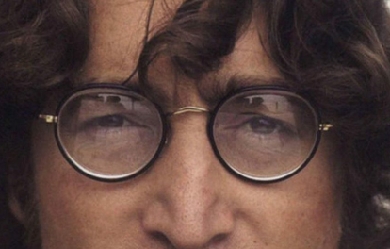

John Winston Lennon (9 October 1940 – 8 December 1980) was an English singer and songwriter who rose to worldwide fame as a co-founder of the Beatles, the most commercially successful band in the history of popular music. With fellow member Paul McCartney, he formed a celebrated songwriting partnership.
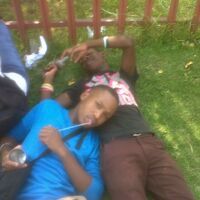
Lindelani Gumede better known as his stage name Likzoro Is a talented Rap Artist and Poet R A P is an abbreviation Meaning Rhyme And Poetry. I can't just do one which is Rap I have to do both. I intend to make the world a better place for all beings. An eye for an eye Makes the world go blind
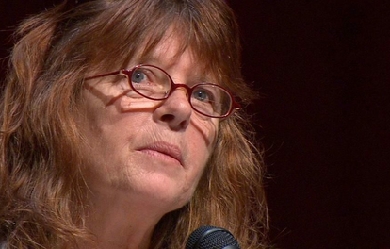
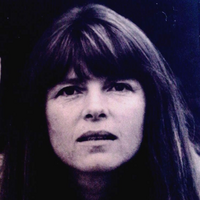
Dorianne Laux (born January 10, 1952 in Augusta, Maine) is an American poet. Biography Laux worked as a sanatorium cook, a gas station manager, and a maid before receiving a B.A. in English from Mills College in 1988. Laux taught at the University of Oregon. She is a professor at North Carolina State University’s creative writing program, and the MFA in Writing Program at Pacific University. She is also a contributing editor at The Alaska Quarterly Review. Her work appeared in American Poetry Review, Five Points, Kenyon Review, Ms., Orion, Ploughshares, Prairie Schooner, Southern Review, TriQuarterly, Zyzzyva. She has also appeared in online journals such as Web Del Sol. Laux lives in Raleigh, North Carolina with her husband, poet Joseph Millar. She has one daughter.
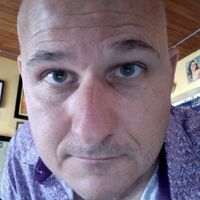
Stephen Lindow was from FL when he moved to MA in 1998 to squeak out an MFA in English from UMass-Amherst in 2004 where he taught, loafed, trespassed, and was diagnosed. Moving to Los Angeles in summer 2012, he eked out survival with performing and creating poetry films from his laptop. He's published poems in ARTillery, Bad Robot Poetry, Penumbra, The Massachusetts Review, Bateau, and Meat For Tea. He was a poetry editor for The Naugatuck Review from 2010-2011, a scuba diver, urban explorer, naturalist, and noisician[sic]. He performed Kurt Schwitters's 'Ursonata' with a Dadaist group in Holyoke, MA and took a TESOL license in 2008. In the late 90s he toured with Poetry Alive!, Inc. He currently teaches English Comp. at HCC-Brandon. Stephen Lindow era de FL cuando se trasladó a MA en 1998 a chillar a una maestría en Inglés de UMass-Amherst en 2004 donde enseñó, loafed, traspasados y fue diagnosticado. Mudarse a Los Angeles en el verano de 2012, se ganaba recogía la supervivencia con realizar y crear películas poesía desde su portátil. Ha publicado poemas en artillería, Bad Robot poesía, Penumbra, la revisión de Massachusetts, Bateau y carne para el té. Fue un editor de poesía para la revisión de Naugatuck de 2010-2011, un equipo de submarinismo buzo, explorador urbano, naturalista y noisician [sic]. Actuó de Kurt Schwitters 'Ursonata' con un dadaísta grupo en Holyoke, Massachusetts y tomó una licencia de TESOL en 2008. A finales de los 90 recorrió con poesía viva!, Inc. Actualmente imparte clases de inglés comp en HCC-Brandon. Stephen Lindow était FL quand il a déménagé à MA en 1998 à chillar à une maîtrise en anglais de UMass-Amherst en 2004 où il enseigne, loafed, percé et a été diagnostiqué. Arrivée à Los Angeles à l'été 2012, il a obtenu la collecte la survie faire et créer de la poésie de films depuis votre ordinateur portable. Il a publié des poèmes dans l'artillerie, Mauvaise poésie Robot, Penumbra, revue du Massachusetts, de Bateau et de viande pour le thé. Il fut éditeur du matériel de plongée sous-marine de poésie examen 2010-2011 Naugatuck, Plongeur, naturaliste, urban Explorer et noisician [sic]. Agi de Kurt Schwitters « Ursonate » avec un dadaïste de groupe à Holyoke, Massachusetts et a pris une licence TESOL en 2008. À la fin des années 90 Il part en tournée avec la poésie vivante!, Inc. Il enseigne actuellement la maquette anglais à HCC-Brandon. Stephen Lindow là FL khi ông chuyển đến MA vào năm 1998 để chillar để Thạc sĩ của tiếng Anh từ UMass-Amherst trong năm 2004, nơi ông giảng dạy, loafed, xỏ và được chẩn đoán. Di chuyển đến Los Angeles vào mùa hè năm 2012, ông thu được thu thập sự sống còn thực hiện và tạo ra bộ phim thơ từ máy tính xách tay của bạn. Ông đã xuất bản bài thơ pháo binh, Xấu Robot thơ, Penumbra, xem xét của Massachusetts, Bateau và thịt cho trà. Ông là người biên tập thơ đánh giá 2010-2011 Naugatuck, thiết bị lặn Thợ lặn, nhà tự nhiên học, đô thị Explorer và noisician [sic]. Hành động Kurt Schwitters 'Ursonata' với một Dadaist nhóm ở Holyoke, Massachusetts và lấy một giấy phép TESOL trong năm 2008. Vào cuối những năm 90 Ông đã đi lưu diễn với thơ sống!, Inc. Ông hiện đang dạy tiếng Anh comp ở HCC-Brandon. Stephen Lindow war FL als zog er nach MA im Jahr 1998 auf, chillar ein Master in Englisch von UMass Amherst im Jahr 2004, wo er unterrichtete, loafed, durchbohrt und diagnostiziert wurde. Umzug nach Los Angeles im Sommer 2012, erwarb er das Überleben sammeln machen und Filme Poesie von Ihrem Laptop zu erstellen. Er veröffentlichte Gedichte in Artillerie, Bad Robot Poesie, Halbschatten, Bewertung von Massachusetts, Bateau und Fleisch für den Tee. Er war Redakteur der Poesie Review 2010-2011 Naugatuck, Tauchausrüstung Taucher, Naturforscher, urban Explorer und Noisician [sic]. Kurt Schwitters gehandelt 'Ursonata' mit einem dadaistischen Gruppe in Holyoke, Massachusetts und nahm eine TESOL-Lizenz im Jahr 2008. Am Ende der 90er Jahre Er tourte mit Poesie lebendig!, Inc. Er lehrt englische Comp in HCC-Brandon. Стивен Lindow был FL, когда он переехал в мА в 1998 году chillar для степень магистра в английском с UMass Амхерст в 2004 году, где он преподавал, loafed, пирсинг и был поставлен диагноз. Переезд летом 2012 в Лос-Анджелес, он заработал, собирая выживания сделать и создать поэзию фильмы из вашего ноутбука. Он опубликовал стихи в артиллерии, Плохой робот поэзии, полутень, обзор Массачусетс, Бато и мясо для чая. Он был редактором обзор поэзии 2010-2011 Ногатук, подводное плавание оборудования Водолаз, натуралист, Городские Explorer и noisician [sic]. Действовал в Курт Швиттерс «Ursonata» с дадаистов в Холиок, Массачусетс и взял лицензию TESOL в 2008 году. В конце 90-х Он гастролировал с поэзией жив!, Inc. В настоящее время он преподает английский comp в HCC-Брэндон.
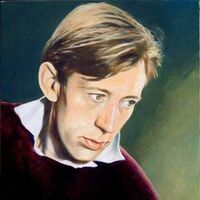
Laurence Edward Alan "Laurie" Lee, MBE (26 June 1914 – 13 May 1997) was an English poet, novelist, and screenwriter, raised in the village of Slad, and went to Marling School, Gloucestershire. His most famous work was an autobiographical trilogy which consisted of Cider with Rosie (1959), As I Walked Out One Midsummer Morning (1969) and A Moment of War (1991). The first volume recounts his childhood in the Slad Valley. The second deals with his leaving home for London and his first visit to Spain in 1935, and the third with his return to Spain in December 1937 to join the Republican International Brigades.






